












Is it just me, or was there a great deal of fanfare surrounding the COP 26 event in Glasgow and relatively little noise about the upcoming COP 27 being held in Sharm El Sheikh this month (6-18 November)?
To be fair, a year ago the world was shedding the shackles of the COVID-19 pandemic and thoughts were again turning to climate change as the most pressing threat of our times. Fast forward a year and we have a global financial crisis looming, war in Europe and growing geopolitical tensions elsewhere.
So has sustainability slipped down the political pecking order? Has the average person in the street got bigger things to worry about in their daily lives? The answer to both questions may well be yes, but business leaders within these pages continue to have their eyes on the long-term prize.
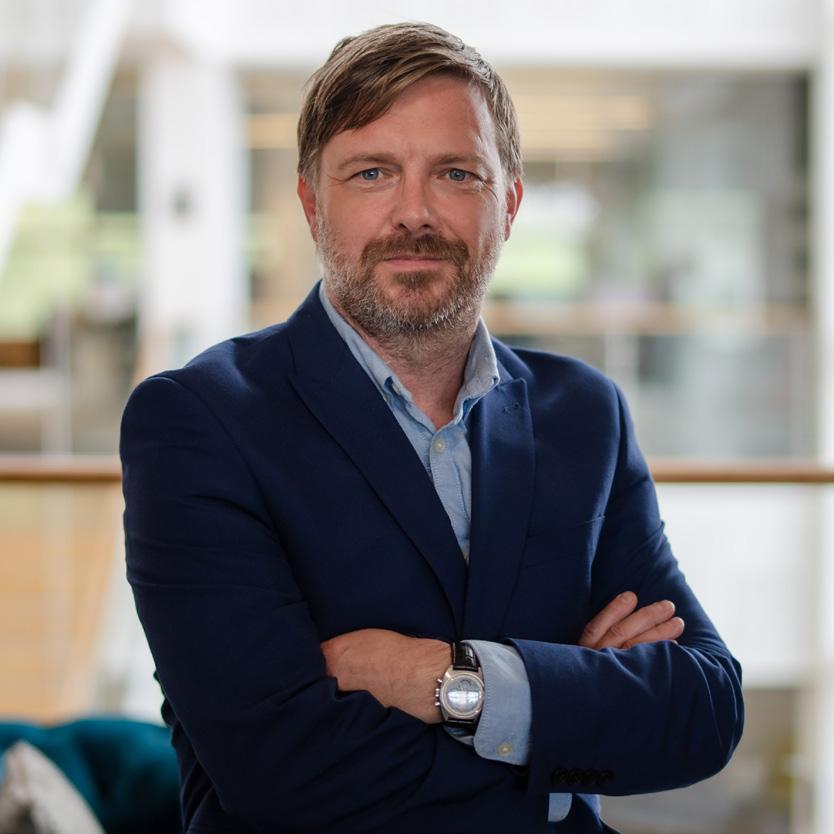

 SCOTT BIRCH scott.birch@bizclikmedia.com
SCOTT BIRCH scott.birch@bizclikmedia.com


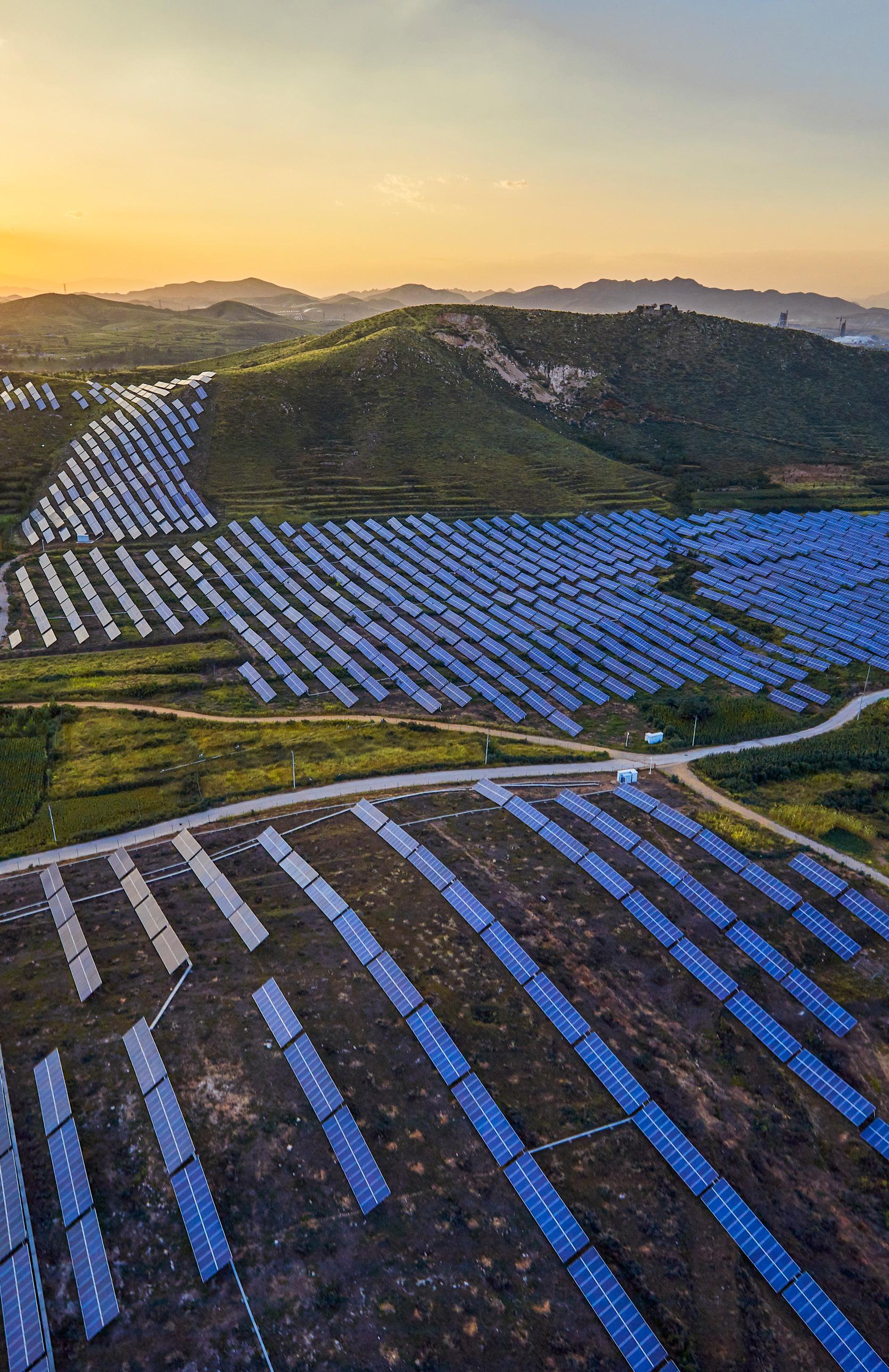

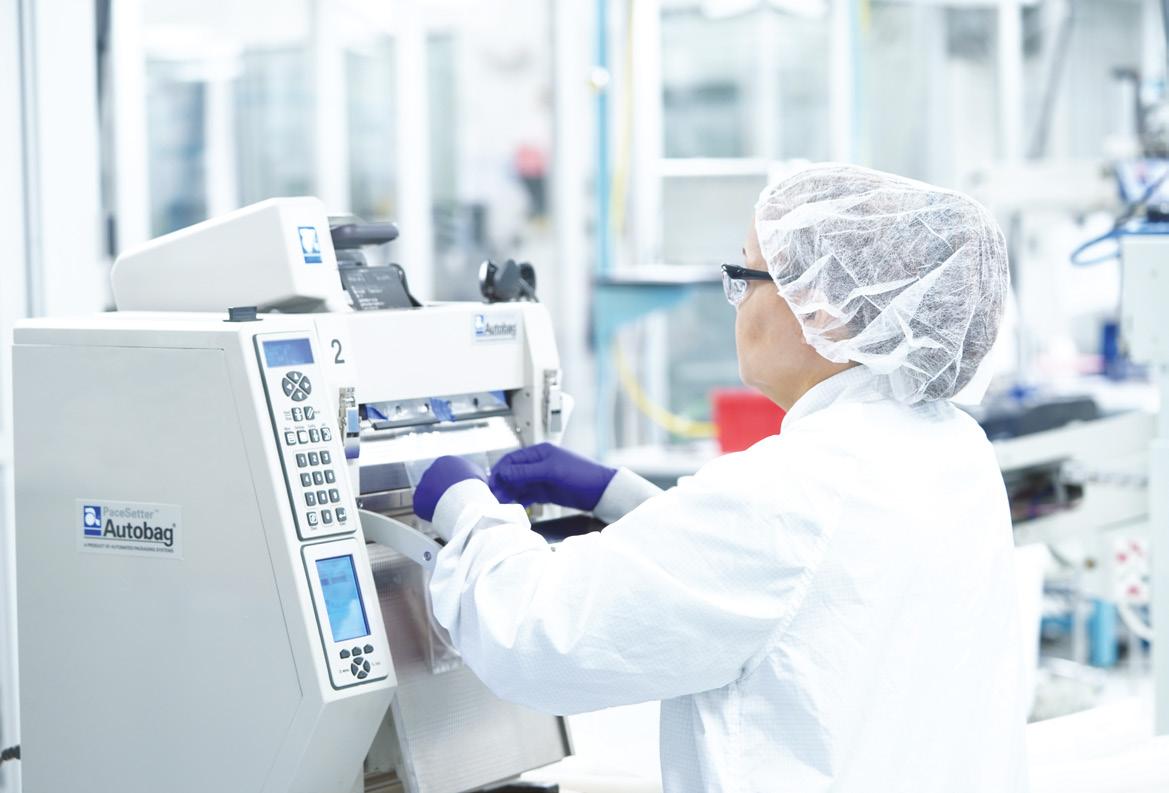

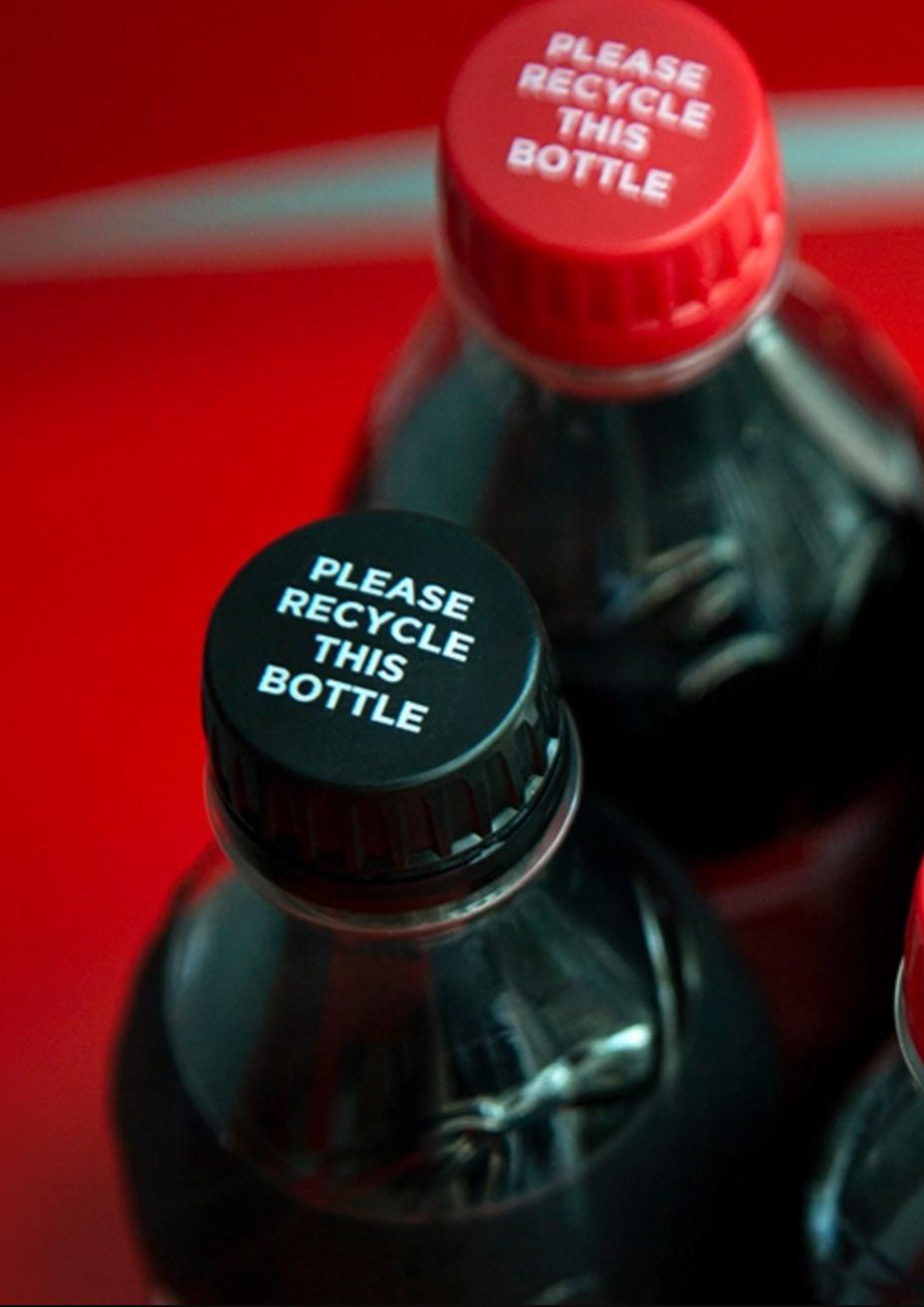
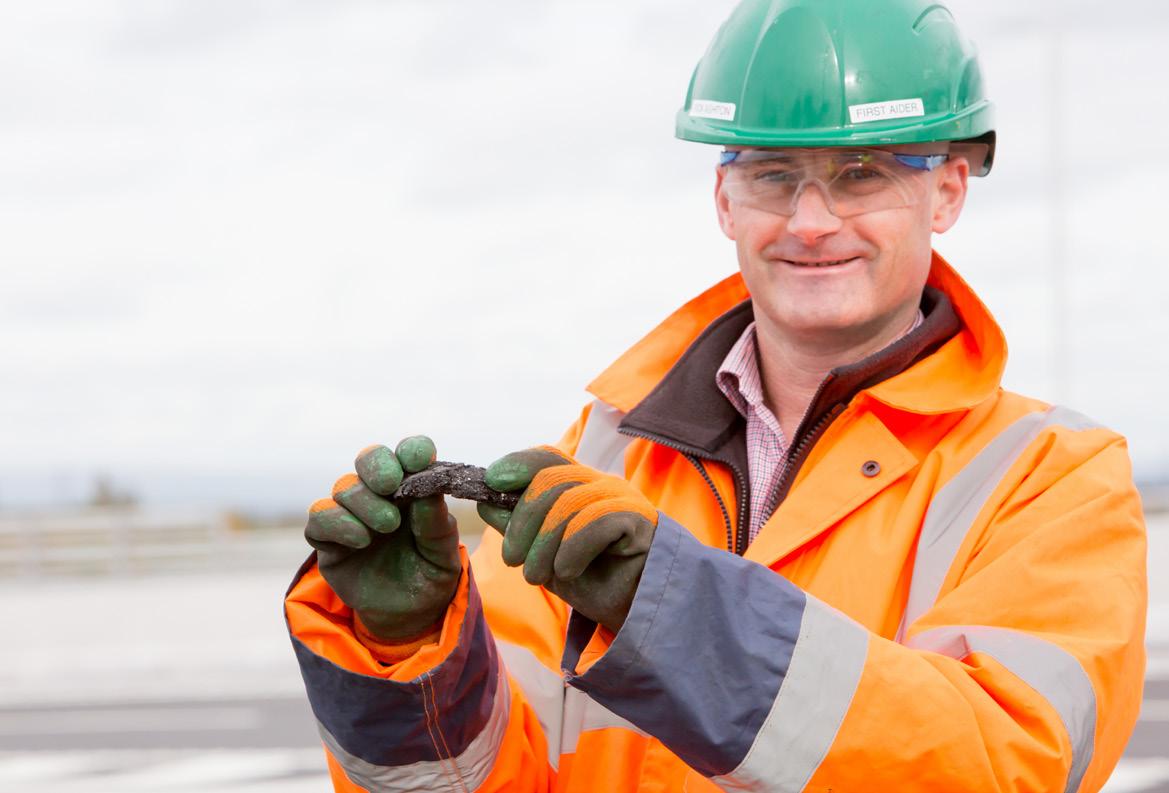




Executives from Appian, AWS, and Xebia share their collaborative efforts and excitement about their partnership in low-code, cloud, and sustainability.
Technology is instrumental to achieving next-level capabilities across industries. But organizations that want to operate sustainably must choose technology that lets them adhere to strong environmental, social, and governance principles.


Appian Corporation, a process automation leader, is a critical piece of the digital transformation and sustainability puzzle. The enterprise-grade Appian Low-Code Platform is built to simplify today’s complex business processes, with process mining, workflow, and automation capabilities.
“By quickly building apps that streamline and automate workflows, organizations are using Appian to make their processes for monitoring and reporting on ESG initiatives faster, simpler, and more effective,” says Meryl Gibbs, Emerging Industries Leader at Appian.
“Both AWS and Appcino are amazing partners of ours,” says Michael Heffner, VP Solutions and Industry Go To Market at Appian. “We have an extremely long legacy engagement with AWS as our trusted, go-to-market partner and Appcino builds “meaningful, business-focused applications on the Appian platform and is amazing in all things ESG.”
Digital transformation in ESG.
As an AWS leader enabling sustainability solutions built on the cloud, Mary Wilson, Global Sustainability Lead at AWS, talks about the partnership with Appian.
“Our objective is to help our customers achieve sustainability goals across their business operations,” says Wilson. “[This means] looking at data availability, meaning access to more data, and enabling actionable insights. “Lowcode, cloud-enabled, technologies will allow organizations to build fast, learn fast, iterate, and continue to improve these insights to drive their sustainability outcomes.”
Tarun Khatri, Co-Founder & Executive Director of Appcino (product part of Xebia), explains just how critical ESG is in the face of digital transformation. “The investment community now considers ESG reporting as a major factor for measuring performance,” says Khatri The collaboration will continually uncover new insights and provides customers the opportunity to accelerate their ESG goals with speed and security.

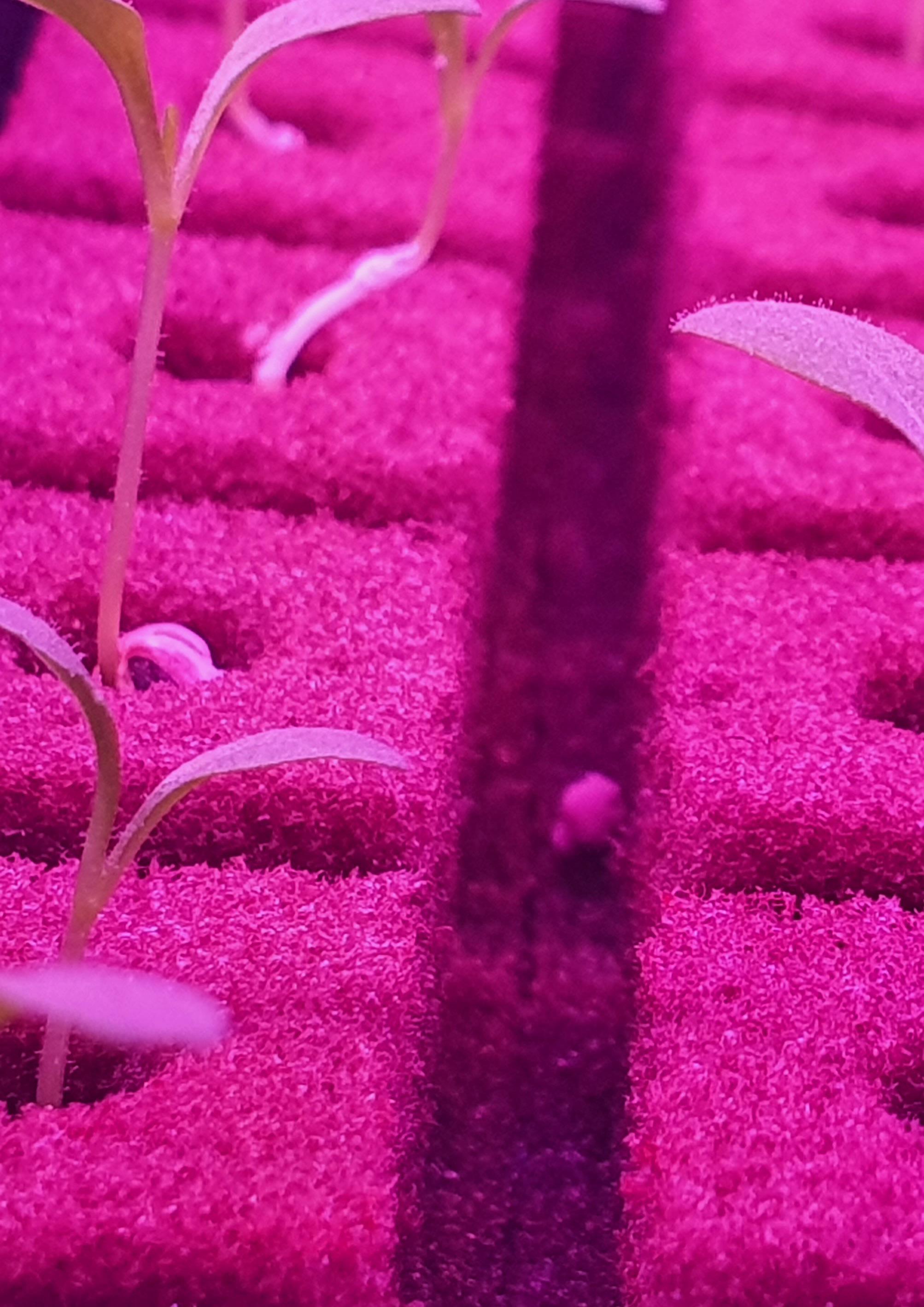

If you have flown recently, you may well have eaten leafy greens cultivated at the world’s largest hydroponic farm. Located near Dubai Al Maktoum International Airport, the 330,000sqft facility is the first vertical farm for Emirates Crop One – a JV between Emirates Flight Catering (serving more than 100 airlines) and Crop One, the leader in vertical farming technology. The farm will produce 3,000kg of greens a day and uses 95% less water than conventional agriculture.

As co-founder of B Lab, the nonprofit behind the global B Corporation movement, Jay Coen Gilbert has set new standards for businesses becoming a force for good in a world of change - for workers, for communities, and for the environment
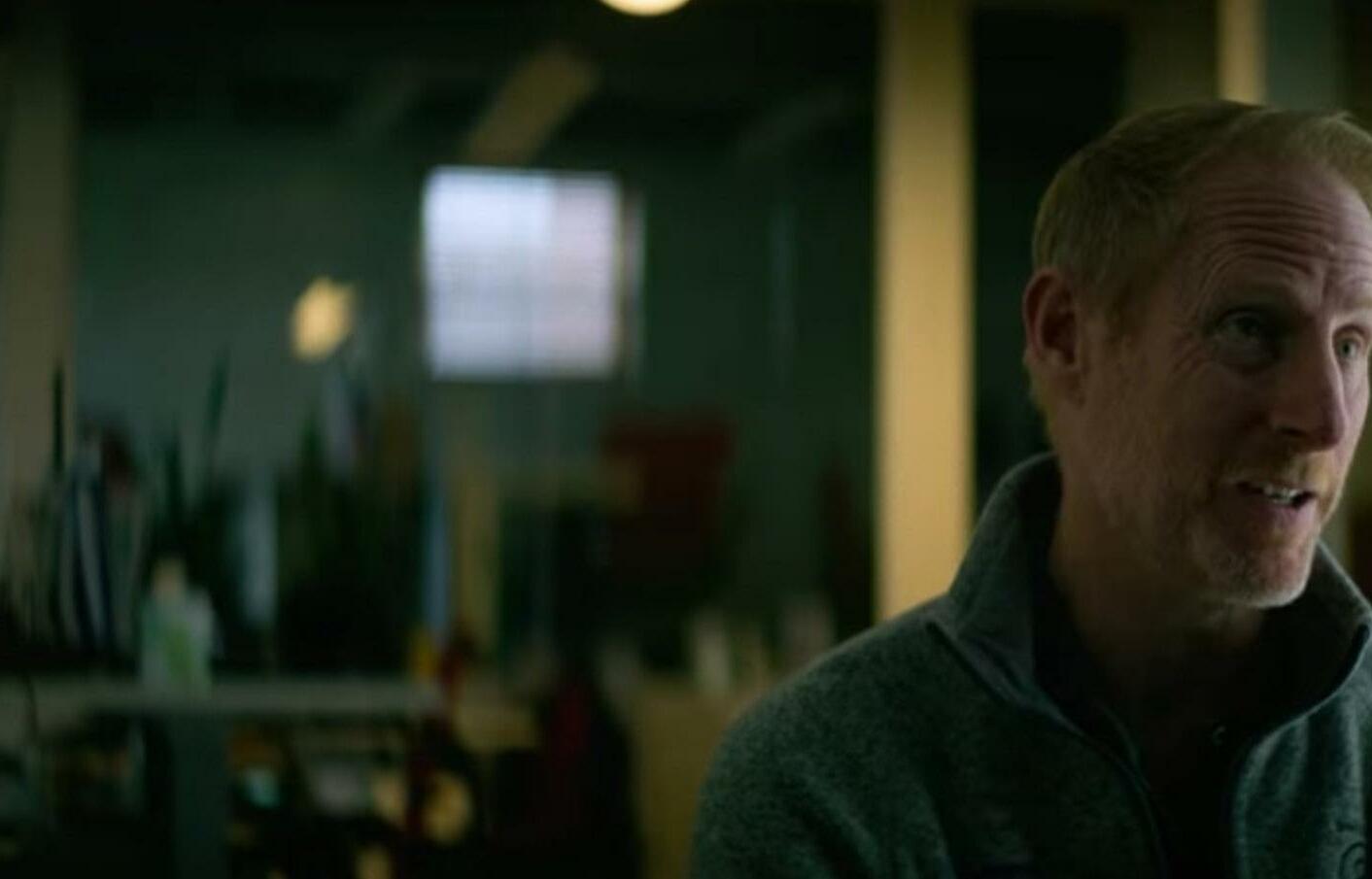
BLab was established in 2006 with the aim of helping businesses make positive change in how the global economy benefits people, communities, and the planet.
Believing that business should not just be about making money, but also about making a difference, Jay Coen Gilbert, Bart Houlahan and Andrew Kassoy set out on a mission to help other entrepreneurs build better businesses. The college friends used their own experiences to propose a business framework that would transform the economic system.
In 2010, Coen Gilbert worked with a Corporate Lawyer to draft B Lab’s ‘Declaration of Interdependence’ - a holistic set of criteria that businesses must meet to become a certified B Corporation (or B Corp) with B Lab’s approval.
This includes:
• Demonstrating high social and environmental performance by achieving 80 or above in the B Impact Assessment
• Making a legal commitment to be accountable to all stakeholders
• Exhibiting transparency in their performance against B Lab’s standards
Today, the B Global Network spans Australia, East Africa, Europe, and North and South America. There are now over 5,000 B Corps in 84 countries, and across 157 industries, including major companies like Patagonia and Ben & Jerry’s.
“Our vision is that one day all companies will compete to be best for the world - best
for workers, best for communities, and best for the environment. Together, we will build an inclusive economy that creates a more shared and durable prosperity for all,” Coen Gilbert wrote for Forbes Magazine.
Using business as a force for positive social and economic change Coen Gilbert and his co-founders developed the B Corp movement on the premise of building a new global economic model that shifts away from wealth, power and individualism, and towards inclusivity, equity, and regeneration.
Since B Lab’s inception, Coen Gilbert has been outspoken on the need to unite business profit demands with the desire for social and economic change.
Using the ‘nurturer farmer mindset’ as an example, he explained the benefits of

striving for B Corp status: “A shift in mindset from exploiter to nurturer is a fundamental need in the world right now, and one of the most inspiring things evident in the Certified B Corporation movement.”
“B Corporations legally expand their fiduciary duty of care to include care for people, care for communities, and care for the natural world on which all life depends. That is what makes B Corps more trusted and more attractive to people who want to work for, buy from, and invest in companies that reflect their values,” he added.
Since co-founding B Lab, Coen Gilbert has served on several boards and even taught a business class at the Quaker school in Westtown. Now, he is also the Executive Co-Chair of Imperative 21, a business-led network that strives to create shared value for all stakeholders in the economic system.
Coen Gilbert’s entrepreneurial career began in 1993 when he co-founded AND1 - a basketball apparel company that sold for US$250mn. Before that, Coen Gilbert worked for multiple nonprofit organisations, including McKinsey & Co.
Along with his B Lab co-founders, Coen Gilbert received the Skoll Award for Social Entrepreneurship in 2014. He also received the McNulty Prize at the Aspen Institute, where he is a Henry Crown Fellow, in 2015.
In 2019, Coen Gilbert was named as one of Business Insider’s ‘100 People Transforming Business’ for his success in spreading the B Corp movement around the world.
Coen Gilbert continues to demonstrate his dedication to helping businesses realise the benefits of working towards an equitable and sustainable economic model, together.



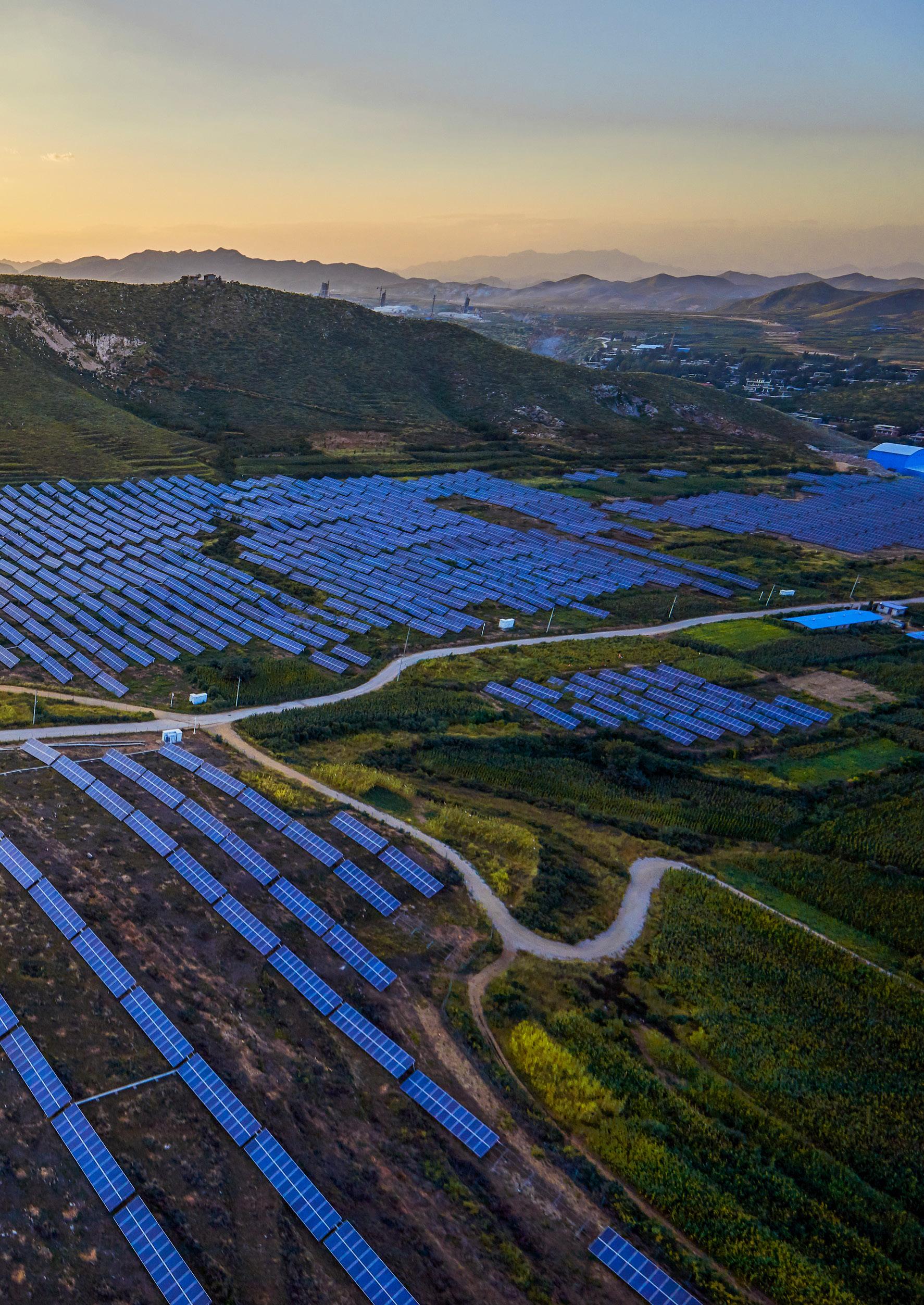
BY: LEWIS HAMMOND
BY: TOM SWALLOW
Common ground now firmly exists among many businesses as they embark on projects in aid of sustainability. The global call to action has seen many corporations developing rapidly to meet the environmental, social and governance (ESG) demands of the 21st Century.

Many of these demands relate to the climate crisis tightening collective expectations of companies, with the Paris Climate Agreement seeing more stringent commitments to limit global warming to an increase of 1.5˚C — and nothing more.
Businesses are at the heart of this shift; a change in sentiment and operational strategy by which they can fully adhere to the accords of the Paris Agreement, while also meeting needs of clients, consumers and partners.
To understand the importance of climate change, the climate advisory firm 3Degrees represents the speed at which the climate crisis has evolved. Founded in 2007, the company was named after its commitment to limit temperature rises to ‘3Degrees’ — a number that, since the company was born, has been reduced to the 1.5-degree target we know today. As such, the company stands for more than just climate action: 3Degrees’ name is an indicator of climate urgency, but there are more significant reasons why businesses should be watching the firm.
Maureen Bray from 3Degrees highlights the climate solutions firm’s message of climate commitment and support of its clients’ sustainability transformation
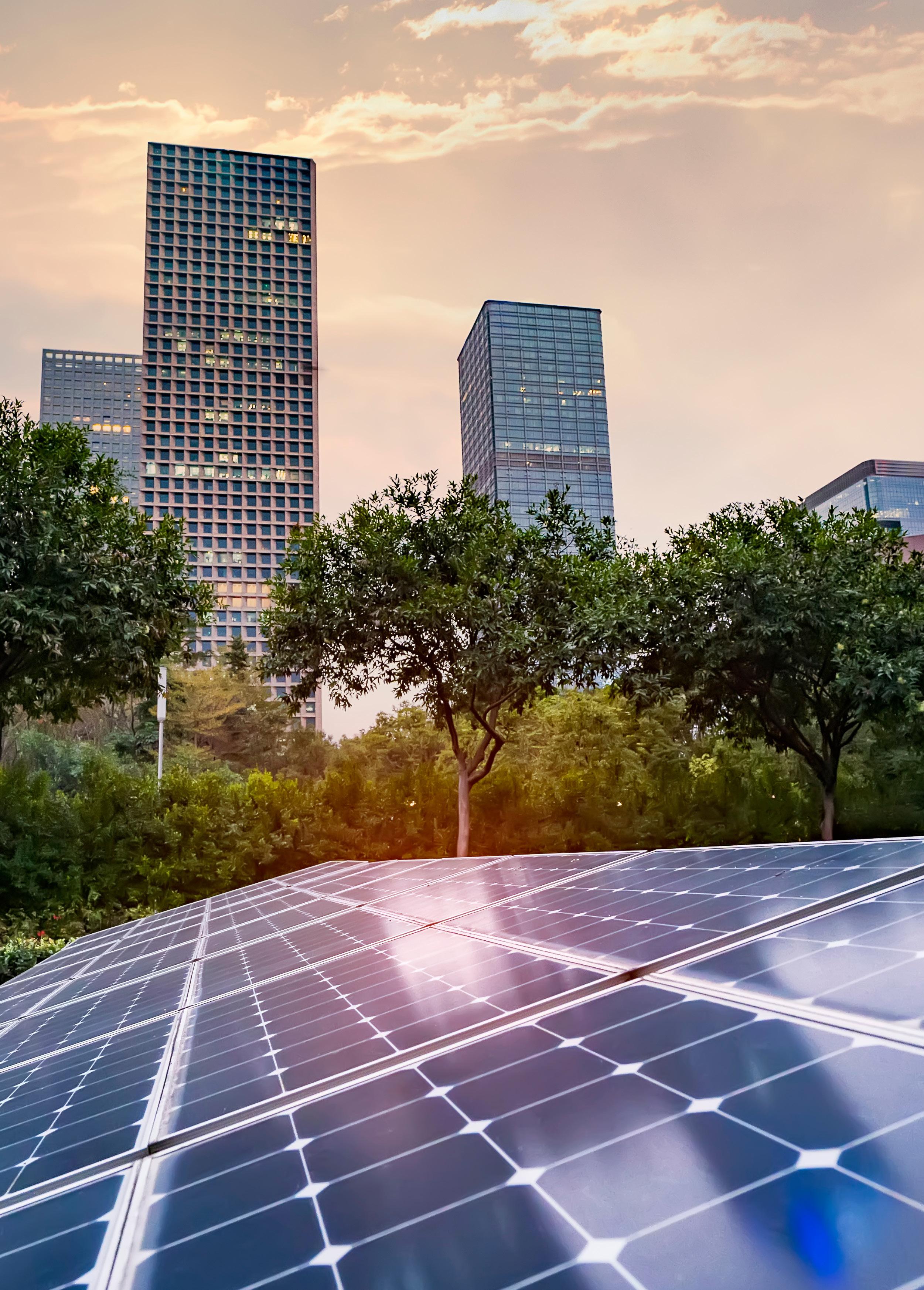
The company was formed by CEO Steve McDougal and Dan Kalafatas, Co-Founder and Chairman, to drive the pair’s belief that businesses have a higher stake in climate change and the ability to contribute more to the global initiative. The business works in the interest of all stakeholders and plays a crucial role in driving support for climate change.
Following its formation, 3Degrees soon became an influential force in the renewable energy certificate (REC) and carbon offset market, as well as an innovator in the utility space and supporter of green energy adoption. The organisation also established itself as a B Corp a decade ago, joining a community of businesses with a shared goal to be the best for the world.
As the organisation has grown, it has retained the message of its founding in addition to retaining much of its leadership team—which is but one of the contributing factors to the success of the company.
Additionally, new talent is always coming through the door sharing 3Degrees’ passion for the planet and its sense of urgency when it comes to climate action — coming together to create a dedicated global workforce of over-220-strong.
The company now sports a diverse team that allows the firm to offer a full suite of solutions across Scopes 1, 2, and 3 emissions and tackle various market segments,
“Focusing on Scope 3 while gaining that primary data and insights is key to driving emissions reduction”
MAUREEN BRAY SENIOR DIRECTOR, ENERGY & CLIMATE PRACTICE STRATEGY EMEA 3DEGREES
MAUREEN BRAY TITLE: SENIOR DIRECTOR,ENERGY & CLIMATE PRACTICE STRATEGY EMEA COMPANY: 3DEGREES LOCATION: SCOTLAND, UK
Maureen Bray has been working in sustainability management and consultancy for over a decade – assisting global organisations to improve their performance whilst reducing their impact on the planet. Maureen has an interest in the use of policy to drive change, but relishes supporting driven organisations in achieving ambitious results through the use of Science Based Targets and other voluntary initiatives such as the RE100.
Maureen uses her extensive experience consulting and supporting Fortune500/FTSE100 corporates to address their challenges in climate governance, planning and strategy implementation. Using best practice, she looks to guide and challenge, seeking the most appropriate and effective approach to being sustainable.

providing climate consultancy, environmental market insights, support for renewable energy attribute certificates (EACs) and carbon project development, and transportation decarbonisation solutions.
“3Degrees has approached its growth in a way that allows us to hire the right talent, for the right positions, to provide the best services to our customers,” says Maureen Bray, Senior Director, Energy & Climate Practice Strategy, EMEA. “We have a global team with varied backgrounds who can support a wide range of customers with varied challenges, providing a deep level of knowledge and experience.”
An integral part of 3Degrees’ operations involves support for companies as they undergo their emissions reduction activities. This includes corporations, non-profit organisations, educational institutions and more—providing them with cost-effective ways to achieve their sustainability goals, with consideration for the nuances of each client company.
The commitment starts in-house, as the consultancy firm has a goal of net zero by 2030, currently matching 100% of its energy usage with EACs and offsetting employee emissions from

commuting as well as business travel. Further efforts are presented in the form of water restoration credits, allowing 3Degrees to cover the water footprint of its organisation, and procurement from diverse, ESG-driven businesses.
Actionable targets require emissions data and planning
As one of the services it offers to its clients, 3Degrees takes businesses through the process of defining their climate goals — which is critical for ensuring that achievable goals are set.

Bray emphasises that progress over perfection is critical here. Business should strike a balance between getting the groundwork in place through setting ambitious goals, while continuing to make progress on climate.
This is where data comes into play. Each client journey follows a similar approach, beginning with data and insights, and ending with sustainable success — and, rightly so, 3Degrees advocates that it celebrates its successes. In its whitepaper, ‘In Setting Corporate Climate Goals, Credibility is Key’, the company explains strategies
organisations can take to map data and apply it to actionable goals.
When discussing the topic of data with Bray, it appears one of the most difficult areas of emissions reduction for any business is in the supply chain. In particular, Scope 3 emissions garner the attention of sustainability leaders as the most difficult to shake. While some organisations are taking to more sophisticated solutions for tracking and actioning Scope 3, the general theme surrounding the topic is ‘transparency’.
This is one of the areas that 3Degrees has found the most pressing, but also testing, for corporate businesses, as it requires a more tailored approach across different industries.
“We’re all about addressing the Intergovernmental Panel on Climate Change’s (IPCC) 1.5-degree global warming crisis and are looking to set up a bespoke, tailored programme for [organisations] to achieve that, aligning their targets from a Scope 3 emissions perspective,” says Bray.
“This includes data accuracy, the screening and inventory of Scope 3 emissions through to supplier engagement programmes, and other reduction initiatives. Whether that is through carbon insetting, value chain interventions, or buying EACs for the supply chain—these are all different ways in which we support corporations towards their commitments.”

While firms are now more inclined towards responsibility, there are other benefits that provide them with more profitable offerings to encourage them to follow more sustainable business practices in 2022.
According to Bray, climate action is one of the ways in which organisations can leverage sustainable activity to improve brand image and ensure products and services meet
Although 3Degrees marks innovation in the eyes of the environment, there is a specific set of values behind the way it addresses client activity. Driven by its core principles, the company seeks to share these with businesses to enable their sustainable transformation.

• Passion: for taking urgent action on climate change
• Respect: for all people
• Commitment: to achieving impact through ground-breaking work
• Integrity: guiding its action
• Diversity: inspires new approaches to business
Recognising the urgency for change, the values of the organisation are echoed throughout its workforce, who know and live out its principles, thus charting the course for sustainable success.
the growing consumer sentiments towards climate change. One way in which businesses can portray their sustainability — both of their company and their products — is through transparency. Businesses must consider their emissions beyond their four walls and gain visibility of their Scope 3 in order to ensure true action against climate change.

Speaking at the Sustainability LIVE London hybrid conference, Bray delves into the topic alongside other industry professionals.
“Those looking to work with their supply chains shouldn't get bogged down in the details or look for a standard to be set before they do anything about it. There needs to be some proactivity there,” says Bray.
3Degrees supports its clients with a full scope of solutions designed to address their Scope 3 emissions, from conducting an initial Scope 3 inventory to supplier engagement, designing a supply chain emissions reduction strategy and implementation.
When advising clients on Scope 3, Bray explains: “They can look at supplier engagement, strategies, education, providing the necessary tools and insights — or even a forum to collaborate among peers on things like aggregate power purchase agreements (PPAs).”
“There are a number of different ways in which organisations can address their supply chain, and I think that’s ever-changing as technology grows and transparency is enabled. Focusing on Scope 3 while gaining primary data and insights is key to driving emissions reduction.”
Beyond the implications of Scope 3, there are decarbonisation solutions available to businesses that could contribute to reducing emissions across all scopes.
“3Degrees helps in a variety of areas. We can help no matter where a corporation is on their decarbonisation journey. Whether it’s at the very start, setting the baseline, or, undertaking footprints and inventories of emissions, to improve on that data as they mature throughout their journey,” says Bray.
As 3Degrees assists clients in decarbonisation solutions, they take this one step further by aligning organisations
with current trends to develop their own carbon strategies.
“From a carbon strategy perspective, it's about addressing residual emissions that remain after reduction initiatives,” says Bray, explaining that this involves addressing “those with carbon credits that meet the quality criteria, meet the standards, and the various different aspects that they want to consider as part of their carbon strategy.”
As its client base grows and their needs evolve, the team at 3Degrees is adapting

to meet these in line with the up-andcoming trends in industry. The aim of the company is to remain one step ahead of the global trends that are shaping the way corporations decarbonise their businesses and, in doing so, giving companies a fighting chance at sustainability while also making it equitable for them.

More and more organisations are setting plans for net zero and 3Degrees will continue to support firms in Europe — building upon its existing team in the region — as well as
North America, while also looking at potential ways to expand its operations in APAC.
As technology enables climate action, businesses require the necessary expertise to leverage the data available to them and use it to overcome business challenges, meeting the needs of all stakeholders — from investors to those impacted socially.

Consultants from Deloitte, KPMG and Roland Berger provide insights on how to handle environmental, social and governance (ESG) issues during M&A activity
WRITTEN BY: KATE BIRCHIn good times and in bad, mergers and acquisitions (M&A) play a vitally important role in the health of your business. M&A can make your organisation more resilient, accelerate transformation, and drive growth. However, there is a new factor in play in these deals that is proving make or break for all stakeholders – environmental, social and governance (ESG).
It’s becoming abundantly clear that climate change will be a defining issue for both governments and businesses for the foreseeable future. The global transition to a low carbon economy is already well underway. Governments are mandating compliance with emissionsreduction targets, and investors are holding organisations accountable for their performance on ESG.
Add to that changing consumer demands (with 90% of Millennials and Gen Zs looking to reduce their impact), not to mention B2B pressures across the value chain, and it’s clear to see that the time to act on ESG is now.
Tackling climate change and making your business not only compliant but also competitive and attractive to both customers and investors is crucial. So how to go about it?
When it comes to M&A strategies where ESG is the central driver, there are three main plays, according to Rochel Hoffman, M&A Partner, Deloitte Australia: Product plays – investing in businesses whose core product and services drive ESG improvement, such as waste management Infrastructure plays – investing in companies that provide the underlying infrastructure for sustainable solutions, such as those in vertical farming Technology plays – investing in businesses that are using disruptive technologies to displace the market by creating new product categories, such as those cultivating meat in laboratories
“Following the uncertainty of the last two years, where markets and the world were heavily impacted by COVID-19, we've seen just how important M&A can be in the good times and the bad,” Hoffman tells Business Chief.
“Today, market conditions are fluctuating once again, with economic headwinds and geopolitical tensions. During times of uncertainty or 'crisis', M&A is an effective tool for safeguarding for the future. The right deals can help to defend against threats



and financial synergies, which can also lead to carbon footprint (amongst other ESG) synergies for the MergeCo. M&A activity is also increasingly serving as the impetus for the new combined entity or separated entities to redefine (and increase) the level of ambition of their ESG commitments.”
Understanding what ESG means is crucial to success One of the issues with ESG is a clear understanding of what ESG actually means –and this varies depending on the business. “ESG is a very broad term and how it applies to businesses will depend on


In the financial markets, lenders and shareholders are actively seeking ESG opportunities, and crucially, presenting companies with the opportunity to reduce their cost of capital”
the sector they operate in,” adds Lalli. “For example, energy and resource efficiency are likely to be high priorities for manufacturers, but for knowledge-based employers, skills development, diversity and shared prosperity are likely to deliver sustainable benefits.
“Once the ESG priorities are understood, the next stage is to start measuring current performance and identify gaps where M&A can accelerate change. We’re starting to see listed companies lead in this area, and ESG due-diligence is now becoming a routine part of assessing potential acquisition targets.”
Geography also plays a hand, with regional variation in ESG expectations and strategies. Europe, for example, had barely begun to recover from the pandemic before the war in Ukraine added extra levels of shock and risk to navigate. From severe disruptions to food supply chains to economic sanctions impacting soaring energy prices, businesses are facing unexpected shocks and see M&A as a potential safety net.
Christof Huth, partner at global consultants Roland Berger, says companies in Europe are looking to strengthen their core business to become less susceptible to these kinds of shocks. “Times like these show how resilient the business model really is and companies may need to reshape themselves – one important tool to become more resilient to crisis is M&A activity.”
Fellow partner at Roland Berger, Sven Kleindienst, says ESG will be just as important as traditional motives, such as geographical or product expansion, digitalisation and cycle resilience, in the next five years. He says the European market is a clear frontrunner in this drive towards ESG.
“ESG is already playing a large role in companies' target selection processes and due diligence and it is expected to further increase,” says Kleindienst. “Transforming your own company towards being more sustainable is not easily done. Acquiring the knowledge and processes from a company with an advanced ESG and managing system or a more sustainable product service offering can strongly accelerate the transformation compared to developing everything in-house.
“APAC differs from the EU and US in that ESG has not been driven by extensive country regulation. Instead, there is a growing appreciation across APAC that ESG risk can materially impact business value, serve as a source of value creation, and provide access to international markets and competitive green capital within and outside APAC”
CLIMATE & SUSTAINABILITY LEADER APAC, DELOITTE
According to Sven Kleindienst, Partner of the Restructuring, Performance, Transformation & Transaction team at Roland Berger, add-on acquisitions for geographical or product expansion, digitalisation and cycle resilience are seen as the most important factors for M&A. But ESG is expected to become just as important for M&A in the coming five years, as ESG will be one of the key market drivers next to digitalization, he says.
“The European market is a clear frontrunner with regards to this! Currently, M&A activity in Europe is centered around companies from the segments of technology, pharma & healthcare, and business services & logistics, especially due to the strong growth outlooks as well as their expected resilience to economic or political crisis."
“Having a superior sustainable offering and fulfilling further ESG criteria is increasingly valued by the acquiring strategic or financial investors.”
The APAC picture includes a “wide range of attitudes” according to Will Symons, Climate & Sustainability Leader, Deloitte Asia Pacific, who says the ‘E’ in ESG can be a risk exercise to appease global investors and pension funds.
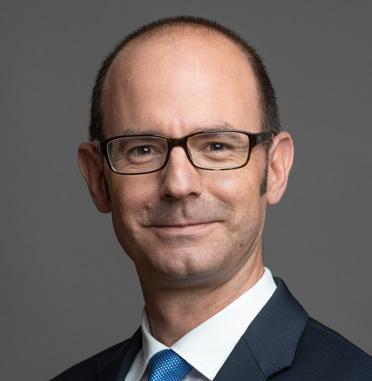
“This is partly rooted in the context that APAC differs from the EU and US in that ESG has not been driven by extensive country regulation,” says Symons. “Instead, there is a growing appreciation across APAC that ESG risk can materially impact business value, serve as a source of value creation and provide access to international markets and competitive green capital within and outside APAC.”
ESG should be embedded into core business Understanding the value creation opportunities that exist in relation to ESG across different sectors is also driving the integration of ESG into M&A decisionmaking. ESG is increasingly being used as a lens to identify new sources of growth and competitive differentiation, with M&A being an accelerator for delivering on such strategic priorities.
And this is surely the crux of the matter. Investors (and consumers) are increasingly savvy when it comes to ESG or potential greenwashing, and demand the highest standards. So how can companies ensure they position themselves correctly during M&A?
“The businesses that succeed with ESG in their M&A cut through the hype and focus on strategic alignment, due diligence, execution, and value creation,” says Symons.
SVEN KLEINDIENST PARTNER, RESTRUCTURING, PERFORMANCE, TRANSFORMATION & TRANSACTION TEAM, ROLAND BERGER
“Companies navigating this during an acquisition should embed all aspects of ESG into long-term growth strategies, making it core to their business strategy and not a separate topic. They should use wellreferenced frameworks and guidelines and may also want to consider external assurance to back up commitments and progress against ESG goals.”
KPMG’s Lalli adds that shareholders and management should be clear on the ESG strategy prior to launching a process, and crucially, they should identify the key ESG priorities and how they will be measured.

“Being able to demonstrate progress against targets will be important to acquirors and their lenders, and the longer the period that metrics are measured, the better,” he says.
Christof Huth also emphasises the need to have meaningful data to convince investors. "In times where it is extremely important for companies to be ESG compliant, green washing has become a problem – also for investors, making it more difficult to distinguish between actual sustainability leaders and those just claiming to be,” says Huth.
“Against this background, it is imperative to have data ready to back up the ESG claims made during the M&A process. Having an accurate picture about relevant environmental, social and governmental impacts of business activities, and benchmarks against the industry and competitors is mandatory to convince potential investors."
Given the incredible impact ESG issues can have on a company’s valuation, the level of scrutiny should be as high, if not higher, as the attention given to its financials. Symons
says Deloitte recommends an end-toend ESG M&A approach from strategy and deal origination, through to due diligence, announcement, and integration onto postdeal, long-term value creation.
This is a sentiment echoed by Kleindienst at Roland Berger, who says the guidelines should not only be set for a successful acquisition but also for a successful holding period or post-merger integration. He says this is not always the case.

“In times where it is extremely important for companies to be ESG compliant, green washing has become a problem – also for investors, making it more difficult to distinguish between actual sustainability leaders and those just claiming to be”
“Currently, we still see a divide in the way ESG is reported, ‘lived’, and most importantly further developed across organisations,” he says. “While many still see it as more of a regulatory mandate, a growing number of investors are starting to see the ESG space as a chance to create additional value. Proper ESG due diligence lays the groundwork for a successful investment and it enables the investor to understand the status-quo as well as the ESG potential of the company."

New opportunities in ESG So what should companies consider when looking for ESG-focused M&A opportunities? Hoffman advises corporates to start with their overall strategic priorities, where they want to expand, the gaps they have and then consider how to further accelerate this through M&A.
Companies should use a combination of defensive and offensive M&A strategies to capture the full spectrum of ESG opportunities. This will involve asking themselves key questions such as what demand for their products and services will look like in 5-10 years, how can they pivot their business strategy to deliver value while gaining a competitive edge, and how
“We see great potential in the ESG-focused transformation of companies from a value perspective – already, certain PE investors are leading the change in this”
SVEN KLEINDIENST PARTNER, RESTRUCTURING, PERFORMANCE, TRANSFORMATION & TRANSACTION TEAM, ROLAND BERGER
embracing ESG in M&A could enable them to grow sustainably.
For a company to realise potential increased valuations in M&A, the key areas that Deloitte advise clients to focus on from an ESG perspective are:
Gain an understanding of what ESG means for the company’s strategic priorities (this will be different for each company and each sector)
Develop and execute an ESG strategy (ideally embedded in the corporate strategy)
Set appropriately ambitious and credible ESG targets and align incentives to these targets
Remain cognizant of the fast-evolving stakeholder expectations, particularly from customers, investors, employees and regulators
“The structural adjustment and value creation that will occur in response to climate change will be the business of this decade,” concludes Symons. “As markets and private equity (PE) firms become more competitive to ESG performance, driving returns through ESG performance improvements will be a significant opportunity for the PE market.”
Making your company more attractive to investors and potential suitors all comes down to ESG, and it is important that executives see this as a value and growth driver, not just a regulatory hurdle, says Kleindienst.
“We see great potential in the ESGfocused transformation of companies from a value perspective – already, certain PE investors are leading the change in this and strongly focusing on implementing ESG initiatives for this reason,” he says. “Incentives need to be provided based on ESG targets and not only on short-term profits to be able to realise this potential."

 PRODUCED BY: MIKE SADR
PRODUCED BY: MIKE SADR


There’s an old saying which, in a world awash with ‘Big Data’, has taken on greater meaning: ‘All models are wrong; some models are useful.’
But forward-thinking companies are working on how to tame overwhelming amounts of data, with machine learning (ML) and artificial intelligence (AI) to speed up processes, save on spending and find new opportunities for business growth.
These industry leaders include Las Vegas, NV-headquartered Westfall Technik. The growth trajectory of Westfall Technik has proven to be compelling for customers and the markets alike. Accelerated by the significant platform built through the acquisition of 15-20 companies over a 4-year timespan, the company has seen continued solid organic growth from their customers in their target markets of healthcare and consumer packaged goods and continues on their new customer acquisition journey.
Westfall’s corporate methodologies, backed by their “Stacked Integration Model”, certainly deliver as these relate to their value proposition supported by correlative moulding processes and effective Industry 4.0 concepts.
Westfall’s portfolio of healthcarerelated products features medical devices, pharmaceutical delivery systems, diagnostic tools, consumer health products, and

Westfall Technik’s David Schultz and Arkestro’s Edmund Zagorin explain how machine learning and game theory can benefit supply chains across industries
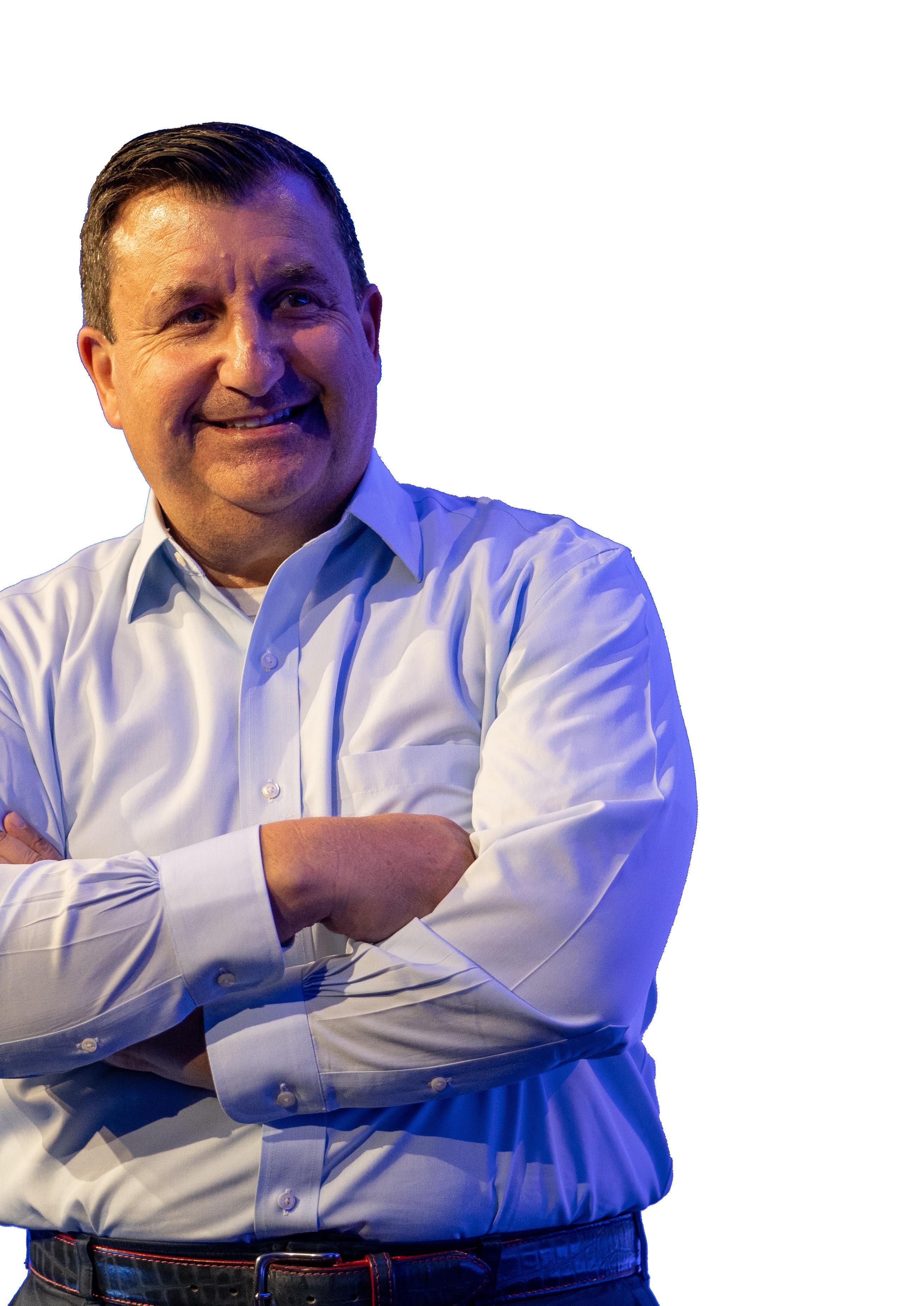
a range of services that also includes the moulding of plastic parts used in COVID-19 diagnostic rapid testing for both home and clinical use.
VP and Chief Supply Chain Executive David Schultz joined Westfall in February this year. He is responsible for the global supply chain across the entire enterprise, covering a broad range of critical responsibilities, including all areas of procurement and supply chain functions.
“Westfall is a company that's made over 15 acquisitions in the last four-and-a-half
years. This activity, along with significant organic growth, has resulted in explosive expansion, with hundreds of millions of dollars in revenue,” explains Schultz. “And, as all those companies were brought together, I was approached by Mark Gomulka, the CEO of the organisation, who said, ‘We need somebody to come in and put this all together, make this all work as a cohesive unit’. And that’s now my major goal: to bring all those operating units together and build teams of people who can leverage the proper intelligence.”

Among Schultz’s early business decisions was the introduction of a Predictive Procurement Orchestration solution provided by San Franciscobased Arkestro for use across the entire Westfall enterprise.
“I first met David at a Chief Procurement Officer event, where he was chairing the conference and giving a talk about the state of the market and some of the changes that he was seeing,” says Arkestro Founder and CEO Edmund Zagorin. “I saw that we had alignment in terms of how we perceived the market landscape. One of those key points of alignment was that there's so much volatility and complexity that it can be really challenging to deliver business impact fast using any digital solution that requires widespread user adoption to be successful. That's something that we take really seriously, so David and I got to talking, ultimately finding that we had vision lock.”
Zagorin has a background in quantitative network analysis and strategic sourcing consulting. He and his team launched Arkestro to help large enterprise procurement teams solve tough supply chain problems, drive continuous process improvement, and – in his own words –be their supplier's best customer.

Westfall is also an Arkestro Corporate Alliance Partner and will advise on the functionality of new Arkestro products and capabilities. Westfall recently joined the Association of Plastic Recyclers’ Demand Champions Program and the Ellen MacArthur Foundation's Global Commitment for a New Plastics Economy.
The Arkestro platform embeds preferred outcomes into any organisation's system or process, which practically means
TITLE: CHIEF SUPPLY CHAIN EXECUTIVE COMPANY: WESTFALL TECHNIK
INDUSTRY: SUPPLY CHAIN
LOCATION: SOUTH CAROLINA, US
David is a senior management executive whose broad business experience and data-driven approach enables organisations to dramatically reduce costs in extremely competitive markets.
He is an imaginative dealmaker passionate about building trusting relationships and highly skilled at managing several billion dollars of spend resulting in significant dividends and speed-to-margin.
Prior to joining Westfall, David served as VP CSCO/Chief Procurement Officer for several public and privately held companies.
He thrives in organisations that promote and support the acquisition of new skills, technologies, and transformative thinking.
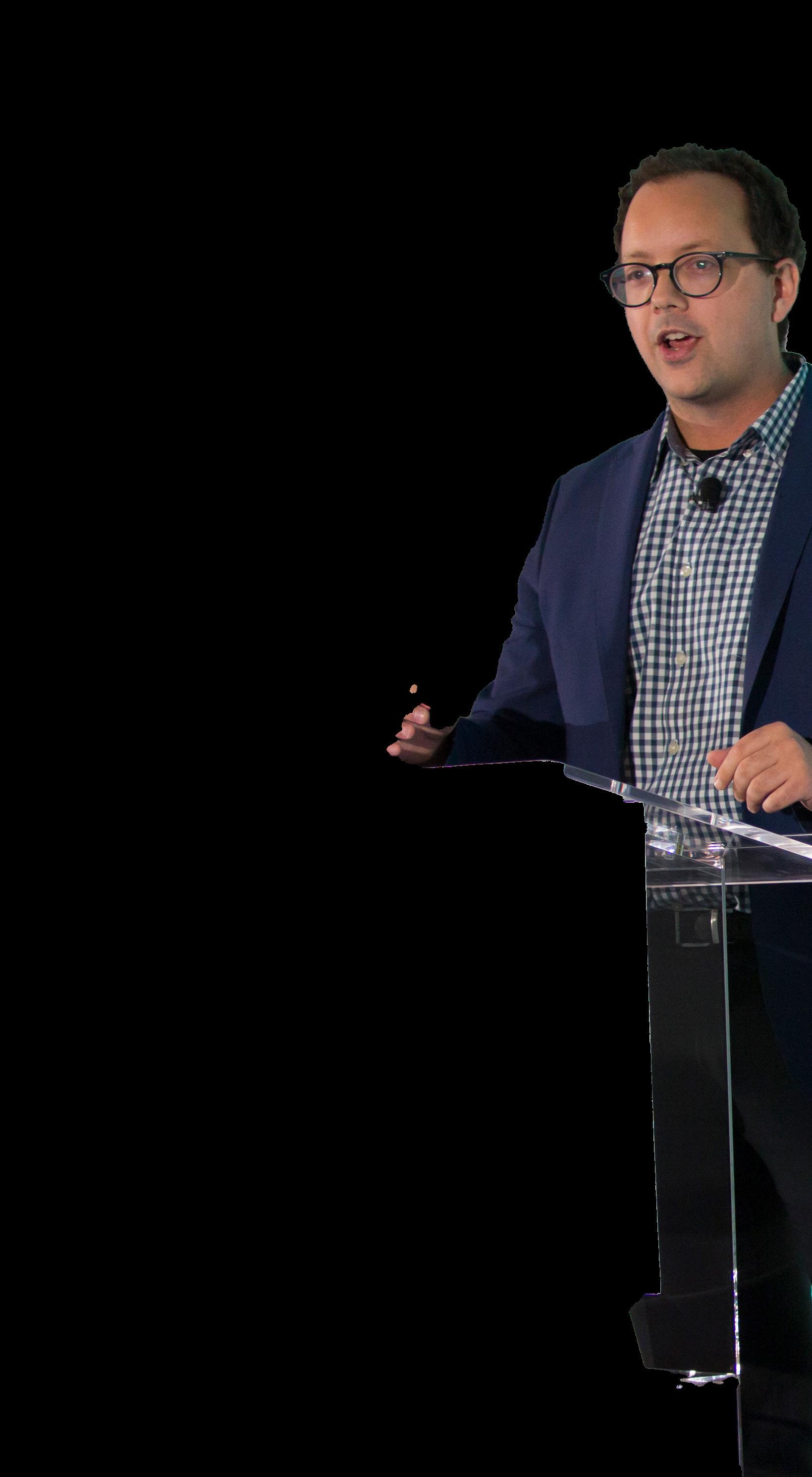
LOCATION: SAN FRANCISCO, US
Edmund Zagorin is a procurement thought leader obsessed with the power of recommendations to fix broken processes and supply chains. Prior to founding Arkestro, Edmund worked as a consultant focused on datadriven supplier negotiations for large healthcare providers, contract manufacturers and multi-campus retail brands.
Edmund is widely recognised as an expert on the emerging role of machine learning and artificial intelligence in procurement and has presented executive briefings on this topic to leadership teams.

pre-populating validated data about the supplier, the pricing and commercial terms of a transaction. It accomplishes this using an AI model that simulates a procurement cycle before it happens and then sends recommendations on quotes to the suppliers. Arkestro also routes more purchases to preferred suppliers (including suppliers that align more with ESG and risk objectives) and the price recommendation functionality saves significant time and resources.
Environmental, social and governance (ESG) criteria are vitally important, so Westfall Technik also leverages the Arkestro platform
to ensure they are working with suppliers that meet their environmental goals, while improving the effectiveness and productivity of the internal supply chain team.
"Westfall Technik's decision to work with Arkestro validates the value that we bring to managing supplier relationships, while also highlighting an important and innovative use case for us," says Zagorin.
Investing in technology means investing in people Schultz says he had a very specific challenge he wanted to address at Westfall and was initially drawn to the
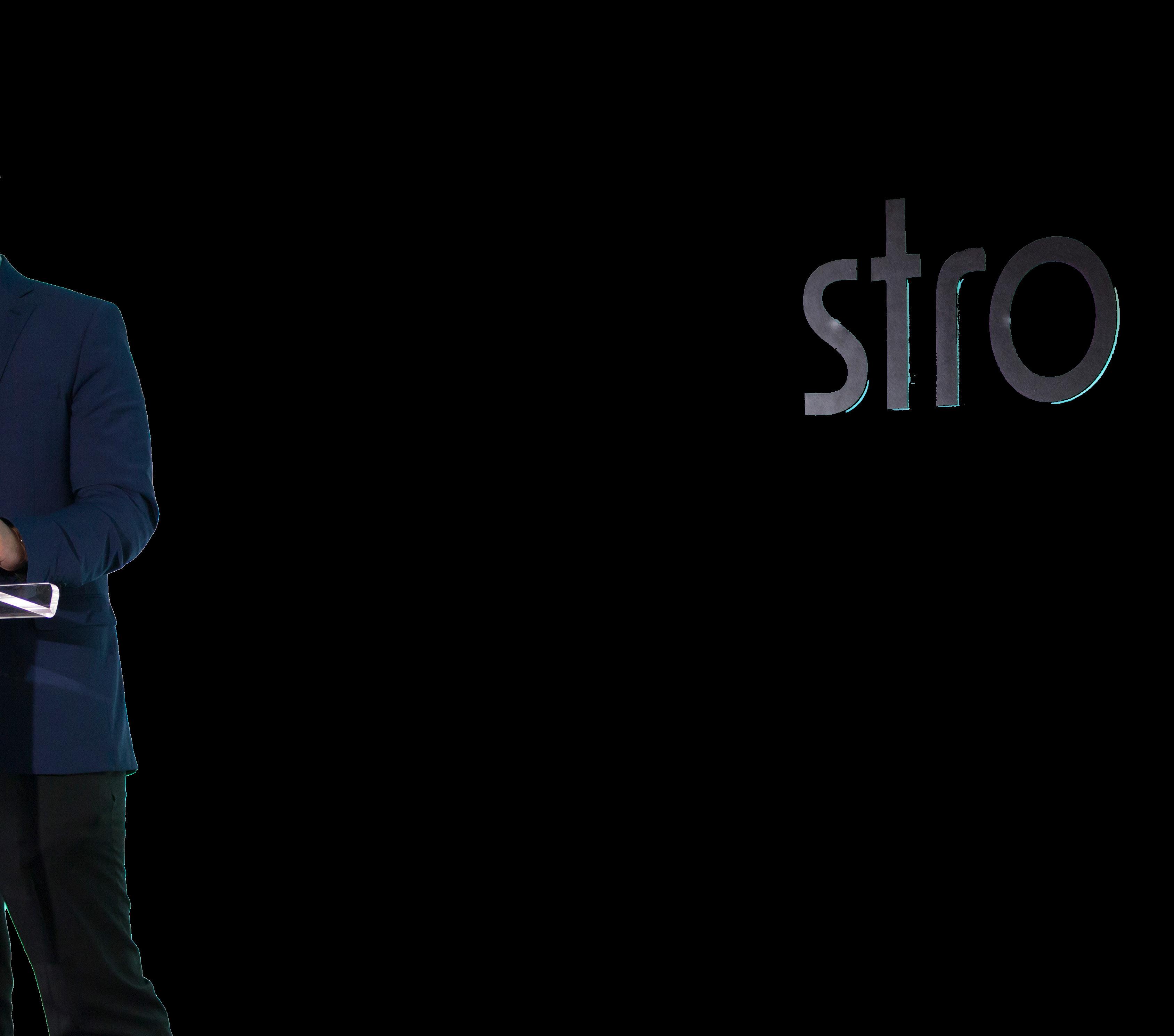
“Westfall Technik's decision to work with Arkestro validates the value that we bring to managing supplier relationship”
EDMUND ZAGORIN
FOUNDER & CEO, ARKESTRO
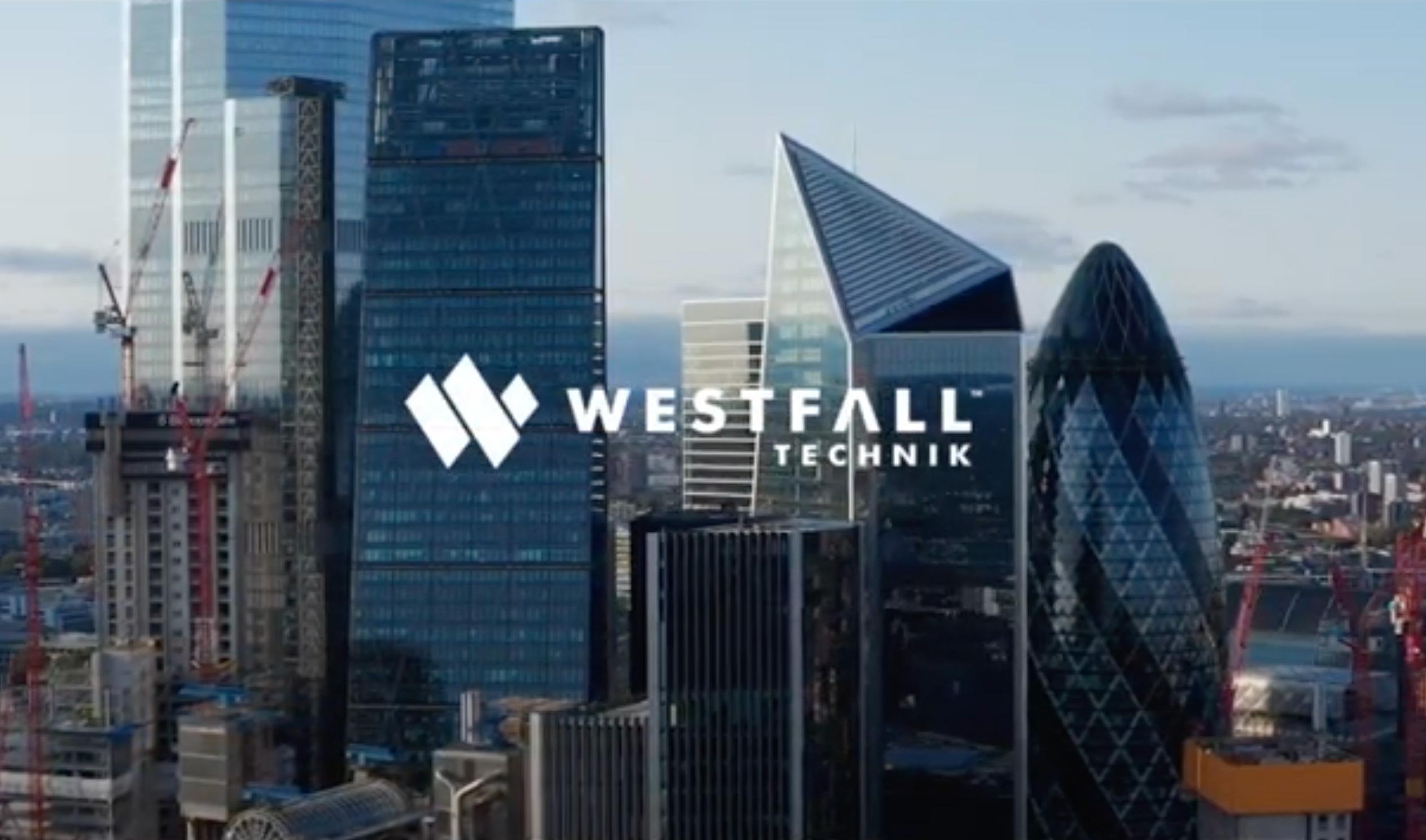 DAVID SCHULTZ CHIEF SUPPLY CHAIN EXECUTIVE, WESTFALL TECHNIK
DAVID SCHULTZ CHIEF SUPPLY CHAIN EXECUTIVE, WESTFALL TECHNIK
platform’s predictive pricing feature, which he felt was unique and well-suited to offer transparency and credibility with the supplier base. Once he took a closer look at the platform, he realised it was the most practical solution to provide the best value possible in the least amount of time.
“David came to me shortly after joining the organisation and suggested multiple options to accelerate the transformation to one operating system and mindset,” says Westfall Technik CEO Mark Gomulka. “It was vitally important that our supplier and customer partners fully understood the power of One Westfall and the competitive advantages for their respective businesses. The Arkestro platform has been a key part of our strategy to attain this vision on the supply side of the equation.”
“It's not just technology, it's people, and the pedigree of Edmund’s background and experience, as well as his vision for the company, was very reassuring to us”
Schultz found that the team of people behind the platform were also eager to support his own business operations, as well as the vast ecosystem of suppliers he deals with on a daily basis.
“We invest in people,” explains Schultz. “It's not just technology, it's people, and the pedigree of Edmund’s background and experience as well as his vision for the company – this was all very reassuring to us. In particular, we need the suppliers to want to participate, cooperate, and know they have taken part in a fair process.
“Data-driven solutions are the ultimate goal – we should all do our best to ignore any opinions masquerading as fact,” says Schultz. “There’s certainly a tremendous amount of information out there about AI and ML, which is very important, but I often remind myself that it’s the intersection of artificial intelligence with human intelligence that really makes it all work.”
pricing for everything from materials to spare parts. This might include suppliers working with manual spreadsheets, having to copy and paste prices and pitches, dealing with procurement teams on a case-by-case basis, and a wealth of additional measures, each created from scratch by individual companies and teams.
percentage of companies that experienced more disruptions to their supply chain in 2021 than in previous years, according to the Hubs Supply Chain Resilience Report 2021
“And, in many cases when it comes to long-held supplier relationships, personal knowledge of the companies is important when making supplier decisions,” says Zagorin. “Traditionally, the entire process can take, conservatively speaking, weeks, but frequently, months and sometimes years depending on the complexity. When we looked at this, we knew that if we simulated the process at the start where requests are pre-filled with validated data-driven recommendations, Arkestro could make it so much easier and faster for suppliers to conduct business.”
Arkestro is at the forefront of costmodelling by ML and behavioural science, says Zagorin, following the groundwork on dynamic pricing laid by Expedia and Uber.
“Predictive pricing is a concept that fundamentally simplifies a transaction,” says Zagorin. “It’s not necessarily better for one side or the other; the advantage is it's so much faster to settle the terms of the transaction, enabling both parties to move on to building great supplier relationships.
The Arkestro platform is designed to cut through the disparate collection of workflows and workarounds that a typical company has to deal with today in order to source


“Data-driven solutions are the ultimate goal – we should all do our best to ignore any opinions masquerading as fact”
Arkestro’s data and behavioural economics research backs this up, demonstrating how the platform is better in financial terms for the procuring organisation, particularly for those companies looking to scale operations across more spend without necessarily having additional procurement headcount available.
“That's really Arkestro’s mission: to amplify the impact of procurement’s influence,” says Zagorin. “And that's where we see the power of embedding ML recommendations on price and supplier terms into processes wherever they are – be that email, spreadsheets or other systems the company might already be using.”
Westfall’s work with Arkestro has allowed Zagorin’s team to learn from a large company working with thousands of suppliers. Zagorin himself has said that David’s input has been something of an inspiration, particularly his drive to get teams working with data to see what benefits can be generated.

“David got his team to ‘kick the tyres’ and challenge us really early on when we came together,” says Zagorin. “I’m always a student of our clients, and David has a great ability to get people in a room to say, ‘We’re going to see how this works, so let’s analyse the

data and use it carefully and strategically to make the proper decisions’. David has referenced on several occasions that, in the business world, we all need to be cautious of ‘opinion masquerading as fact’. It's been really powerful and a big part of what's made the partnership so great.”

Schultz says that he and his team have been impressed with the Arkestro platform’s ability to bring order to traditional networks of suppliers, contacts and contracts, which inevitably produce a cascading flow of actionable data at every turn.
“It's been awesome to see what our extended team at Westfall has done with the platform,” says Schultz. “Most procurement and supply chain leaders
DAVID SCHULTZ CHIEF SUPPLY CHAIN EXECUTIVE, WESTFALL TECHNIK“It's the intersection of artificial intelligence with human intelligence that really makes it all work”
will tell you every industry's a little bit different, every category of spend is a little bit different, that there are unique dynamics with a supplier relationship based on how much money you spend with them. Or perhaps it’s a case of ‘Do we have a contract with them? How often is that potentially going to change? Is the contract being used as a kind of ad hoc purchase?’ All of these questions create a tremendous amount of complexity –and complexity can often mean more work. That’s why having model-driven recommendations can help cut through the noise.
“It’s that old expression,” he says. “‘All models are wrong; some models are useful’
– we would say that all models are wrong, some models are useful, but the Arkestro model – used in partnership with our customers/suppliers – is the best way to get a tangible business impact.”
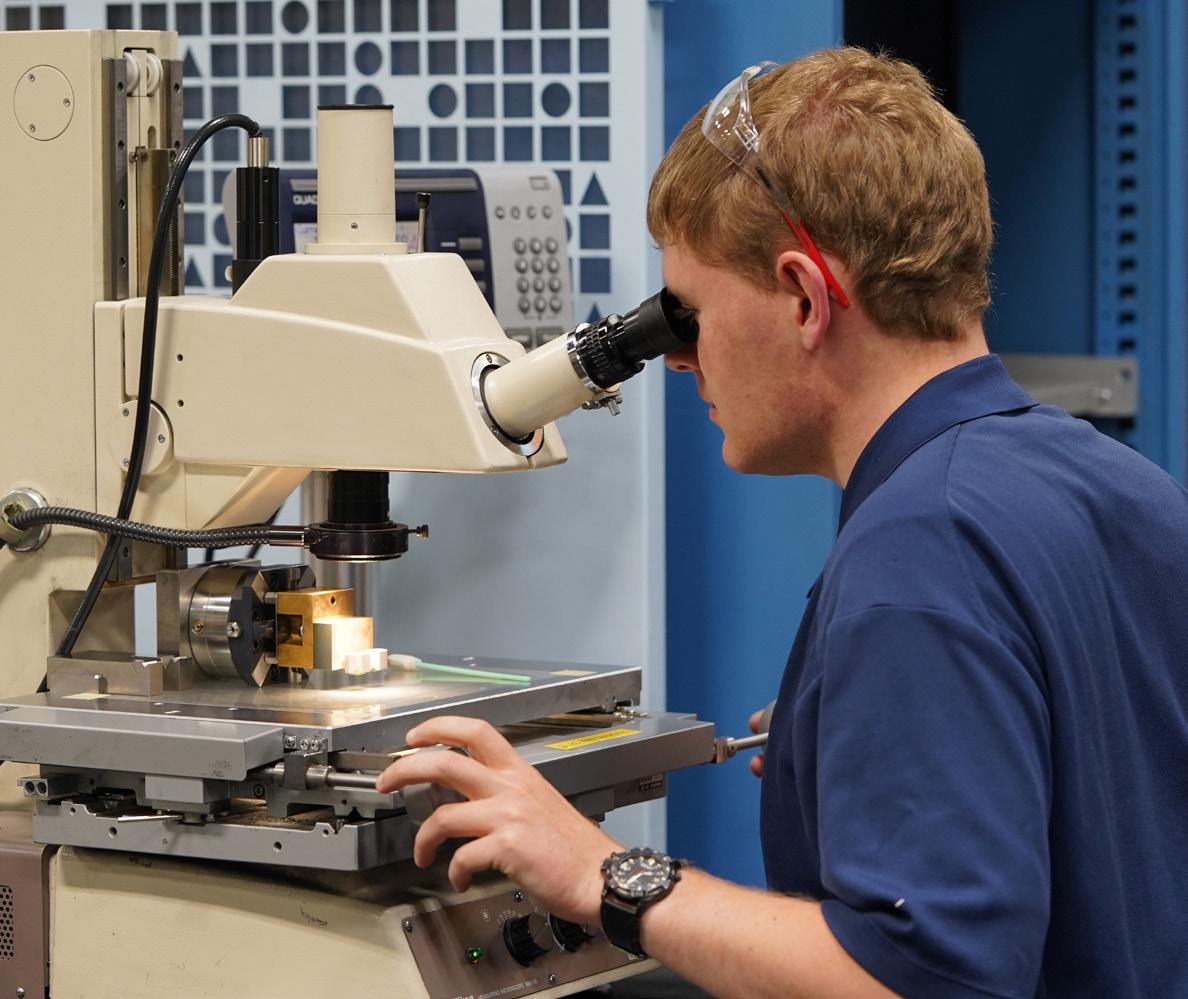

Two recently released reports highlight the significant challenges facing countries in Asia Pacific when it comes to adopting renewable energy in a transition to net zero.
One study from Sumitomo Mitsui Banking Corporation (SMBC) and Economist Impact, suggests that countries in APAC need to address the funding gap for renewable energy projects, while a Black & Veatch report says more integration of generation, transmission and distribution technologies is required to balance electric grids, enhance energy security and reach decarbonisation goals.
The SMBC study of 450 executives across nine countries in Asia-Pacific examined how the public and private sectors are driving the transition to a net-zero future, as well as the significant challenges facing the energy transition. While the majority of countries in the Asia-Pacific region have some form of renewable energy national policy, most often for specific renewable energy sources, the study reveals that they largely lack a comprehensive and credible transition plan.
“ESG considerations have only grown more prominent in recent times, driven by the energy crisis, geopolitical tensions, and rapid climate change,” says Rajeev Kannan, Co-Head of Asia Pacific Division, SMBC.
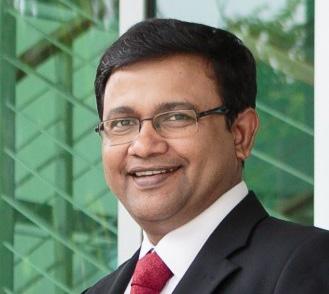
“The findings shed light on how we may advance this transition by tailoring access to finance, technology innovation and ecosystem collaboration, to name a few solutions.”
Approximately half of survey respondents said they believed that over the next five years there would be “more investment” in gas or LNG-to-power facilities combined with carbon capture, while 46% believed gas-fired generation would remain an important part of the energy mix beyond 2035.
Narsingh Chaudhary, Executive Vice President & Managing Director, Asia-Pacific, Black & Veatch, shares his views on the report and the APAC renewables landscape with Energy Magazine.
Narsingh Chaudhary Executive Vice President & Managing Director, Asia-Pacific, Black & Veatch

The report underlines the importance of our electricity systems as a whole, particularly as utilities throughout the region are managing considerable change because of rising decarbonisation demands, climate impacts and other technological advances and opportunities.
According to the report, senior industry executives in the region viewed the integration of renewable energy into grid systems as the biggest challenge facing the industry. Underinvestment in transmission and low confidence in the performance and resilience of their transmission and distribution systems are prominent themes in the report.
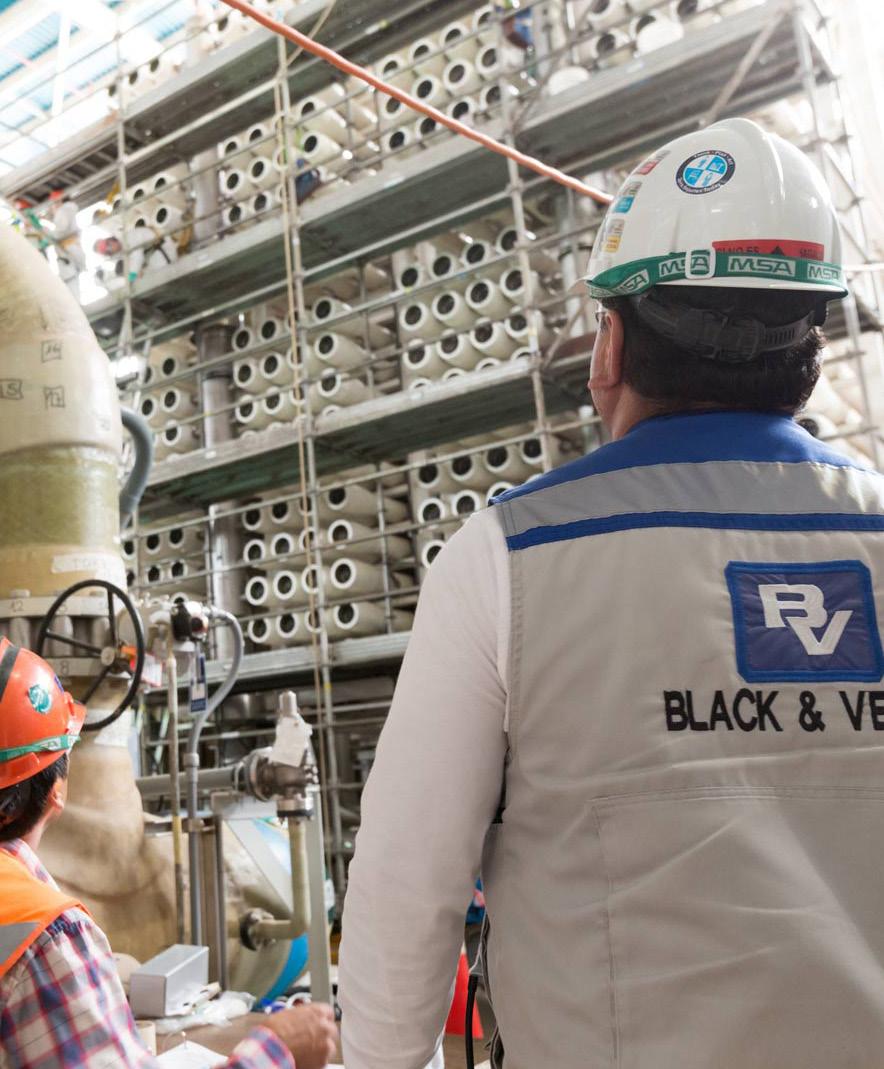 NARSINGH CHAUDHARY EXECUTIVE VICE PRESIDENT & MANAGING DIRECTOR, ASIA-PACIFIC, BLACK & VEATCH
NARSINGH CHAUDHARY EXECUTIVE VICE PRESIDENT & MANAGING DIRECTOR, ASIA-PACIFIC, BLACK & VEATCH
The report also highlights mounting pressures from investors, large customers and governments to lower grid emissions as they, in turn, face pressure from their stakeholders. With the introduction of more renewable energy changing the very nature of electric grid management, the report urges Asian electricity providers to plan and invest seriously across the entire system of generation, transmission and distribution assets.
“WE NEED LEADERS TO STAND TALL, BRIDGE GAPS AND PROBLEM SOLVE IF WE ARE TO ACHIEVE A CLEAN ENERGY TRANSITION THAT IS AFFORDABLE AND JUST, SO THAT ALL PEOPLE BENEFIT”
What are the key challenges the region faces when it comes to electricity?
One key challenge Asia faces is balancing affordability and energy security while accommodating more variable renewable energy generation to meet its decarbonisation commitments. Another key challenge is the unprecedented increase in prices of liquified natural gas (LNG) and natural gas, due to ongoing geopolitical issues, which have impacted several new project developments.
From utility to utility, geography or location is also a significant factor determining relative access to renewable or other fuel sources and ability to connect and provide stable and affordable electricity supply. Regardless, strategic planning and prioritization of investments are key in steering decision-making over five, ten and 20-plus year time horizons if they are to balance affordability, security and decarbonization goals.
In view of these factors, Asia will have to find smart ways to address such unprecedented challenges on fuel price, while coping with the rapid growth in electricity demand as well as increasing risks from climate change impacts.
Is there more detailed variation between different countries in Asia? Which ones have the best infrastructure, etc?
Developed and developing Asian economies have varied power infrastructure to support their diverse energy requirements. It is unfair to draw comparisons as the circumstances that have shaped their energy systems vary based on factors as broad as geography, access to energy resources and economic maturity.
Traditionally, countries with limited access to fossil fuels like Japan or Singapore have focused investments on securing energy supply while other countries have sought to maximise their in-country resources through coal power or hydropower development.
“ONE KEY CHALLENGE ASIA FACES IS BALANCING AFFORDABILITY AND ENERGY SECURITY WHILE ACCOMMODATING MORE VARIABLE RENEWABLE ENERGY GENERATION TO MEET ITS DECARBONISATION COMMITMENTS”
Today, what is common is that all countries are transforming their grid systems and can learn from each other.
The best infrastructure will be realised by successfully integrating new forms of generation and thinking about – and investing into – the grid as a system. Vietnam, as one example, rapidly and successfully grew its solar power capacity in 2019 and 2020 from hundreds of megawatts to 16.8 gigawatts, representing approximately a quarter of the nation’s grid capacity. These investments, on the other hand, outpaced investments in transmission and distribution systems.
What does the future energy mix look like in Asia?

We envision the future energy mix in Asia to include harnessing of natural resources like solar and wind power, hydro resources, new biofuels, battery chemistry and integrated vehicle charging infrastructure.
Green hydrogen and green ammonia are fast emerging as alternative fuels of the future, given their potential in decarbonising power generation and transport, heating domestic and commercial buildings, and supporting industrial feedstock and hard-toabate industrial processes.
What are the opportunities for business leaders?
A successful energy transition demands leadership throughout government and the
Black & Veatch is a 100% employee-owned global engineering, procurement, consulting and construction company with a more than 100-year track record of innovation in sustainable infrastructure. Since 1915, they have helped clients improve the lives of people around the world by addressing the resilience and reliability of the most important infrastructure assets. Black & Veatch revenues exceeded US$3.3 billion in 2021.
Headquartered in Tokyo, Sumitomo Mitsui Banking Corporation (SMBC) is a leading global financial institution and a core member of Sumitomo Mitsui Financial Group (SMBC Group). SMBC is one of the largest Japanese banks by assets, with strong credit ratings across its global integrated network spanning over 41 countries and regions, 16 of which are in Asia.

business community. We need leaders to stand tall, bridge gaps and problem solve if we are to achieve a clean energy transition that is affordable and just, so that all people benefit.

Adoption of digitalisation and technologies that improve overall efficiency, grid response and the reduction of transmission losses will play a critical role in meeting Asia’s ever-increasing demand for power. Digitalisation will also provide the region with the ability to better manage the installed energy mix in accordance with varying availability during the day.
Business is central to achieving a sustainable future as envisioned by the commitments around the Sustainable Development Goals. Whether within the energy community or as a major energy customer, all business leaders are needed to remain focused on achieving this common goal by honoring and delivering on their own commitment and continually fostering financial, business and technological innovation that will shift how we produce and consume energy. The road ahead is challenging, and we need everyone working toward the same goals.
NARSINGH CHAUDHARY EXECUTIVE VICE PRESIDENT & MANAGING DIRECTOR, ASIA-PACIFIC, BLACK & VEATCH

 WRITTEN BY: HELEN ADAMS
PRODUCED BY: CRAIG KILLINGBACK
WRITTEN BY: HELEN ADAMS
PRODUCED BY: CRAIG KILLINGBACK
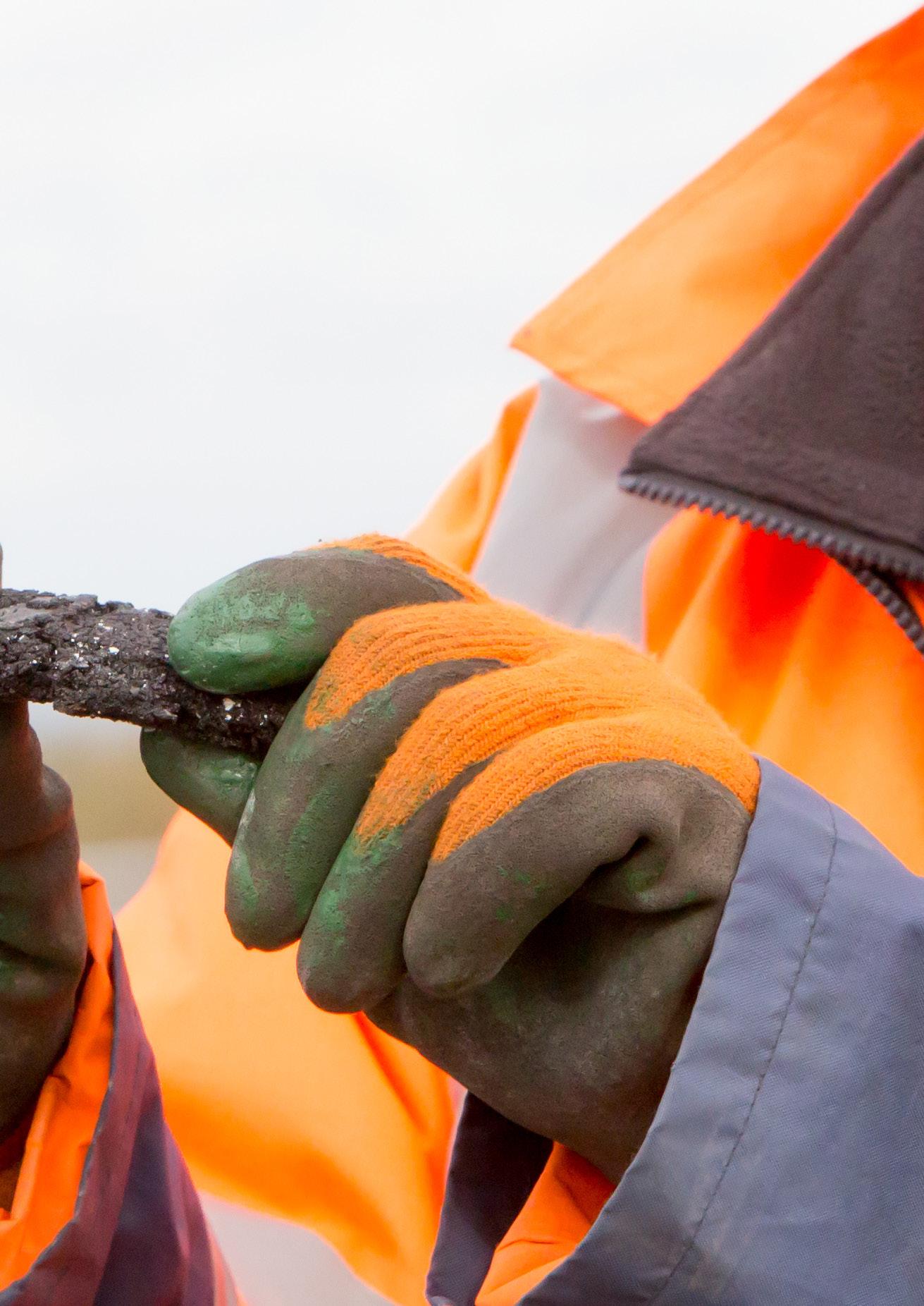


TotalEnergies is a multi-national energy company, founded in 1924 in France. Previously known as Total, in 2021 the Company rebranded as TotalEnergies –in line with its transformation into a broad energy company and a world-class player in the energy transition, including through its own carbon neutrality commitments. TotalEnergies has activities in more than 130 countries worldwide.
TotalEnergies is one of Europe’s largest producers of bitumen and its affiliate, TotalEnergies Marketing UK, has been a market leader in UK bitumen supply for decades, including through the supply of pioneering bitumen products manufactured in its Preston production site. Bitumen is the black viscous substance used to construct roads.

Garr Chau is the Supply Chain Manager for TotalEnergies Marketing UK, a role he landed through a graduate scheme.
“My role involves overseeing a team of planners and the supply of bitumen and additives to our supply locations, imported via ship, rail and road, in addition to road deliveries of bitumen products to our customers from those supply locations.”
TotalEnergies is transforming into a broad energy company and has committed to the Paris Agreement and the United Nations Sustainable Development Goals.
Garr Chau , Supply Chain Manager, & Rick Ashton , Market Development Manager, on the road to sustainable solutions
“We have an ambition and that is to help with the world's energy transition, to reinvent the production and use of energy and to reach Net Zero by 2050 together with society,” says Chau.
TotalEnergies has set objectives to reduce its emissions.
The first step is to reduce Scope 1 and 2 CO2 emissions from TotalEnergies’ worldwide operations.
“We've set ourselves measurable short, medium, and long-term goals - so, by the year 2030, we've committed to reducing Scope 1 and 2 emissions at our own facilities by over 40% versus 2015 levels,” explains Chau.
In addition to decarbonisation, the company seeks to achieve this through improving efficiency across all operations, as well as achieving zero routine flaring at refineries, cutting methane emissions leaks in its gas operations and also by investing significantly in carbon capture and storage capacity as well as natural carbon sinks.
TotalEnergies has also set a 2030 target to reduce its global Scope 3 emissions - i.e. those from the energy products used by its customers - to below 2015 levels.
“The way we can influence this is to work with society - our customers, suppliers, partners and public authorities. We have
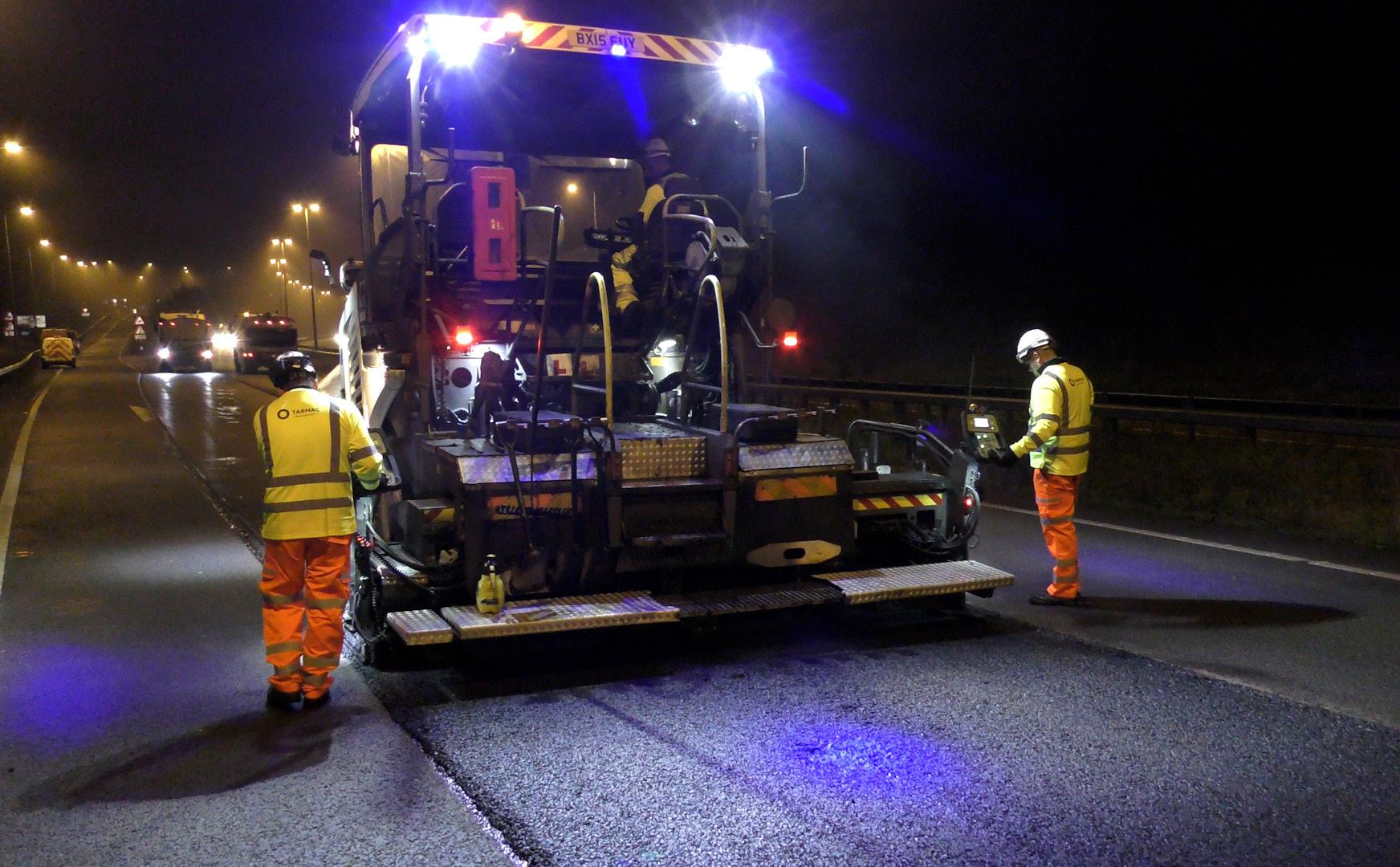
“ The impacts of climate change are irrefutable”
GARR CHAU HEAD OF SUPPLY CHAIN, TOTALENERGIES MARKETING UK LTD.
to transform the way that we all use energy so that we can be sustainable.”
“We are changing our energy mix as a company, hence why we are transforming from being an oil & gas company into an integrated and broad energy company. We are reducing the carbon intensity of petroleum products sold by more than 30%, whilst we also plan to produce and sell 30% more energy products, especially through growth in electricity and liquefied natural gas (LNG). LNG, in particular, is a very important fuel in the transition, as the lowest carbon fossil fuel,” says Chau.
The UK has recently witnessed extreme weather events, first with the heatwaves and then with resulting scenes of flash floodingexamples of how our climate is changing.
“The impacts of climate change are irrefutable,” says Chau. “The general public expects governments and large companies, like TotalEnergies, to act on this. In Europe, around 80% of greenhouse gas emissions come from energy production and consumption, so energy producers have a vital role to play.”

TITLE: HEAD OF SUPPLY CHAIN INDUSTRY: OIL & ENERGY LOCATION: PRESTON, UK
Garr Chau is currently the Head of the Bitumen Supply Chain for TotalEnergies Marketing UK Ltd, where he’s responsible for: primary supply via ship and rail import; stock management and quality control of the 3 terminal locations; and ensuring the safe and cost efficient distribution of finished products to TotalEnergies’ bitumen, PMB and emulsion customers.
Year founded 250+
Number of employees
During his 17-year career at TotalEnergies, Garr has (amongst other roles) served as: a Chemical Engineer at the Lindsey Oil Refinery, responsible for energy optimisation of the combined heat and power (CHP) unit, steam methane reformer (SMR) unit, fired heaters and boilers; Operations Manager of the long distance pipeline and aviation assets; JV Director of the HOSL terminal operation; responsible for safety and mitigating the environmental impact of the bitumen business.
Garr earned both a PhD and MEng in Process Engineering from University College London

Are you looking for an agile, flexible logistics partner with highest quality and safety standards? Do you appreciate expertise that moves you forward? The HOYER Group is one of the world’s leading logistics services providers in handling and transporting liquid products. We are the first point of contact for the chemicals, petroleum products, gas and foodstuffs industries. By road, rail and sea – with our extensive global network we will find the optimum solution for you. We maintain our leading market

position in the petroleum products sector through outstanding safety, environmental and customer service performance. Driving achievement in logistics is part of our DNA. With our sophisticated full-service logistics (from remote stock management to completion of the transport delivery) we make our customers’ business easier and more successful. Together we break new ground in a customised way
MORE
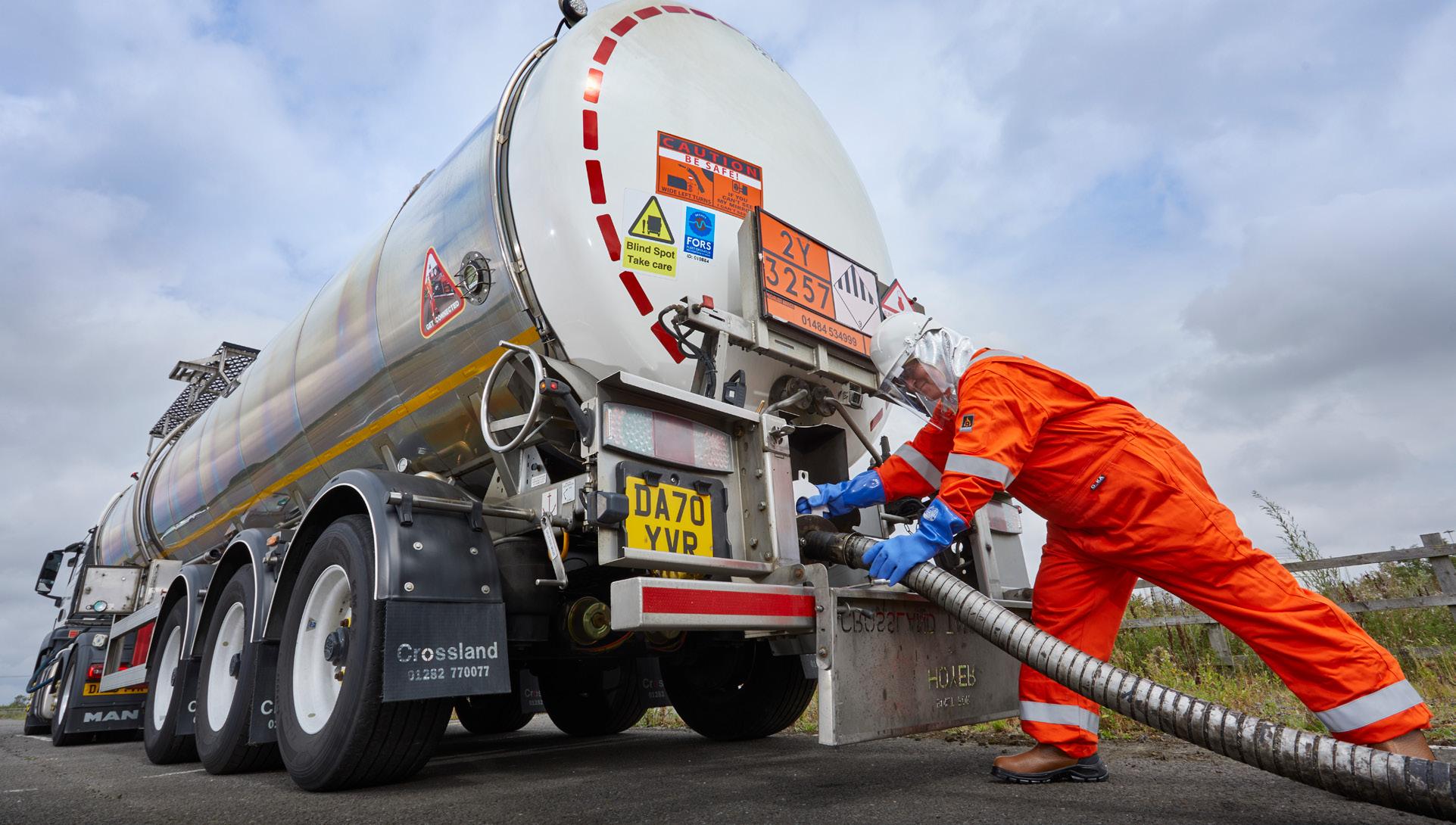
LOCATION: PRESTON, UK
I started in the sector in 1989 in an aggregates and asphalt testing laboratory with Hanson covering quarrying and asphalt operations. I studied construction materials technology with Bath College, then quarrying and asphalt technology with Doncaster College. I joined Aggregate Industries as a Technical Manager, managing on-site asphalt testing, laboratories, and various R&D projects before joining TotalEnergies as Market Development Manager in 2011. My role involves marketing communications, technical liaison, market development and representing TotalEnergies at international conferences and seminars. I’m a member of the Chartered Institute of Highways and Transportation, Institute of Quarrying, and a Branch Chairman of the Institute of Asphalt Technology. Also, the Asphalt Industry Alliance PR Committee liaising with ‘The All-Party Parliamentary Group for Better Roads’ and have assisted BSI working groups in the writing and publication of the current UK Asphalt standards.
Sustainable solutions for customers According to Rick Ashton , Market Development Manager at TotalEnergies Marketing UK, offering customers a range of sustainable solutions is essential in modern

One such solution is the increased adoption of low temperature bitumen that can be used in warm
“The focus at the moment is lowering the temperature of asphalt,” Ashton explains.
“Conventional asphalt is mixed at around 180°C and that takes a lot of energy. If we can lower the manufacturing temperature by chemically
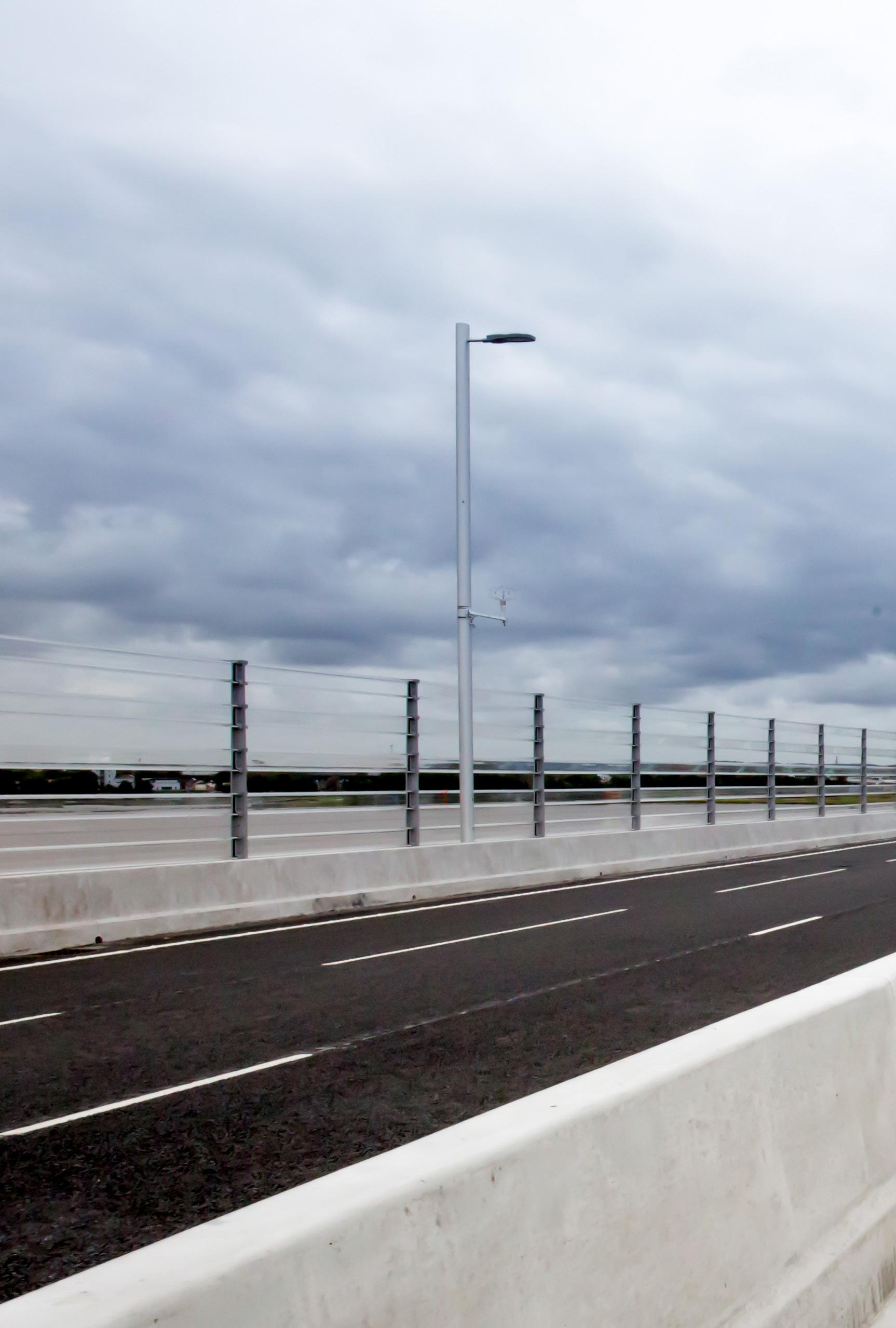
modifying the liquid bitumen, we can reduce the energy demands by up to 30%.”
Representing TotalEnergies, Ashton is also working alongside industry bodies towards net-zero carbon goals and contributing to CO2 reduction in the UK.
“The All-Party Parliamentary Group for Better Roads put together a report for all the local authorities in the country on how to support this.
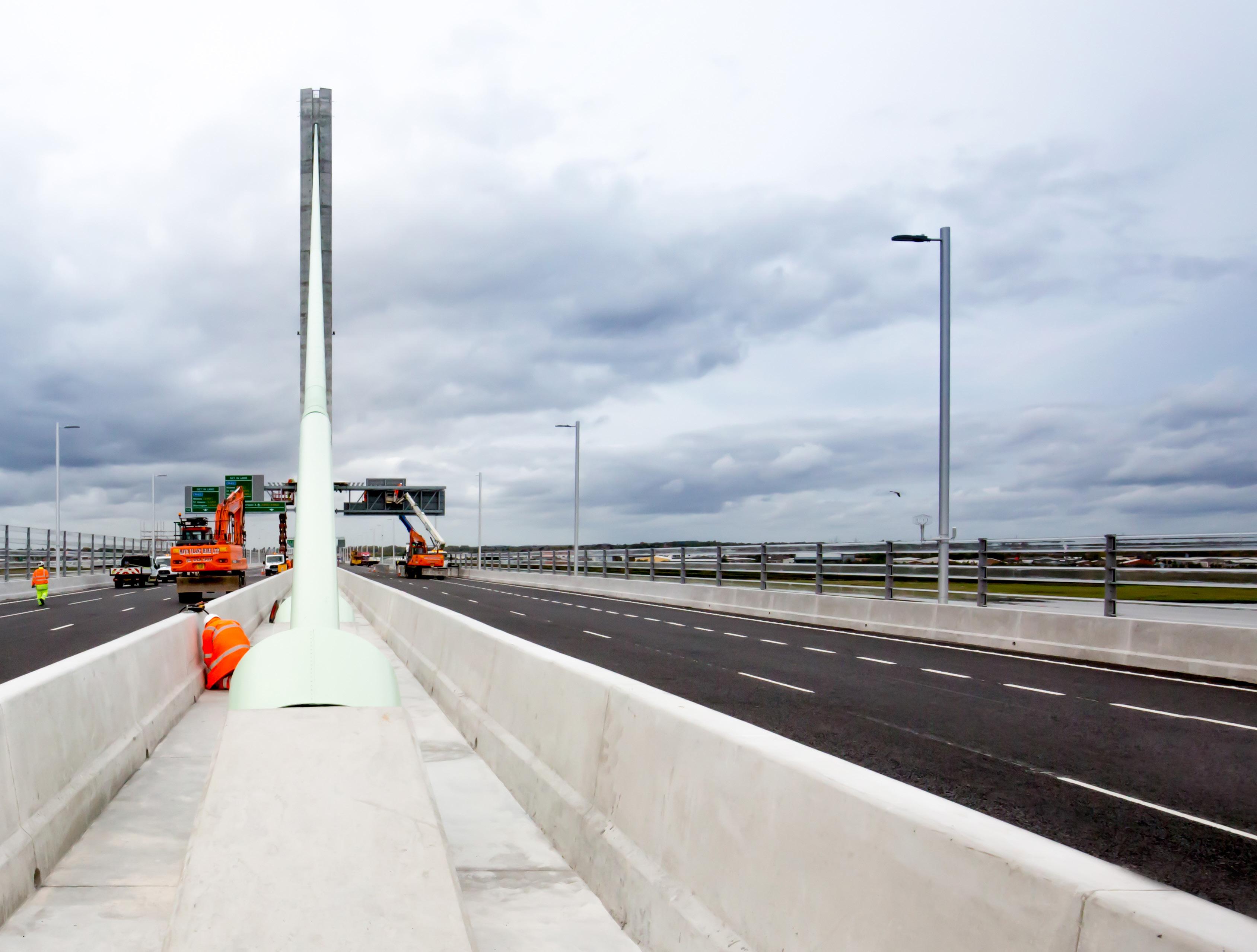
“The report claims if all asphalt production in Great Britain for 2017 had been switched to warm mix asphalt, it would have saved at least 61,000 tonnes of CO2 – the equivalent of cutting almost 300 million miles of car journeys. (Citation: Working for better roads Warm Mix Asphalt: reducing carbon emissions and improving efficiencies)
“When you mix the materials 30°C lower, it means products are cooler to install. This allows faster roadworks as the asphalt can cool to a point where it won’t be too soft to traffic causing deformation. You use less energy to heat the product, because a big part of the energy used in asphalt production
“ The focus at the moment is lowering the temperature of asphalt”
RICK ASHTON MARKET DEVELOPMENT MANAGER, TOTALENERGIES MARKETING UK LTD.
is to get the product to a workable state. Our low temperature ECO2 bitumen, for example, allows the same workability at 140°C - or 40°C cooler.”
Ashton says that this will support road workers, too. “It's a safer environment for them because they're not walking or driving through steam when there's live traffic going past just on the other side of the traffic cones.”
The TotalEnergies team conducted trials to measure the typical cooling times of asphalt. For a traditional hot mixture, a layer can typically be 100mm thick and it will take
TotalEnergies has committed to reducing its Scope 1 and 2 emissions by over


TotalEnergies is reducing the carbon intensity of petroleum products sold by more than
of greenhouse gas emissions come from energy production and consumption
two hours in normal ambient temperatures before traffic can run on the asphalt. Lowering the temperature by 40°C can halve this cooling time.
“Our customers may only have a five-hour slot where they can get in there and actually do the roadworks on a local urban road,” explains Ashton. “If they can add an hour's surfacing into that slot or get the road open an hour quicker, it's a 20% efficiency benefit.”
National Highways, who manage the motorway and trunk road networks, also estimate that an increase in shift outputs of 20% could be provided by using this technology on its network, saving up to £70mn a year. ( Citation – Report, The AllParty Parliamentary Group on Highways: Working for better roads Warm Mix Asphalt: reducing carbon emissions and improving efficiencies. )
“Society needs to focus on ways to reduce energy consumption and it’s the case with prolonged road works and wasted energy if using conventional hot mix asphalt. We know our low temperature energy saving ECO2 products stop this waste.”
Asphalt is the most recycled material globally and, like its hot mix equivalents, TotalEnergies ECO2 is also 100% recyclable back into asphalts in the future, giving further embodied CO2 reduction benefits, helping to prevent waste and conserving natural resources as less aggregate needs to be quarried.

Styrelf® is one of TotalEnergies’ premium products. The name comes from adding a cross-linked polymer into bitumen, called styrene.
“It’s historically been used in high profile sites like at the Monaco Grand Prix
Circuit and the Mersey Gateway Bridge. We perform a huge amount of research and development, both here in the UK and in Europe, and the last 30 years have seen continuous improvement for these products,” explains Ashton.
A new grade in development, Styrelf® Long Life, aims to delay the onset of roadworks. Historically, highways engineers have to predict how long a road will last before potholes begin to form and a road needs to be repaired.
“It’s oxidation that makes the surface more brittle, and eventually it cracks. As it cracks, water gets into the cracks, they get bigger - then you've got a pothole, which somebody needs to repair. To do that, you’re going to have to cause disruption.”
TotalEnergies is working with local authorities and those responsible for maintaining roads on this matter. To get things moving, Ashton is involved in a number of industry bodies such as being a branch Chairman of The Institute of Asphalt Technology (IAT).
“

we can lower the manufacturing temperature by chemically modifying the liquid bitumen, we can reduce the energy demands by up to 30%”
RICK ASHTON MARKET DEVELOPMENT MANAGER, TOTALENERGIES MARKETING UK LTD.
Then there’s a group called the Asphalt Industry Alliance (AIA) whose purpose is to promote the benefits of asphalt. This is a joint venture between the Minerals Product Association and Eurobitume UK, the two principal bodies that represent the suppliers of the raw materials used to produce asphalt, as well as asphalt producers and laying contractors. This then feeds into central government via the All-Party Parliamentary Group for Better Roads.
TotalEnergies has a partnership with transportation and supply chain company Hoyer Gas & Petrol Logistics Limited, which provides services to the company in the form of planning, safe loading, road transport and delivery of bitumen products to its UK customers.
“TotalEnergies was Hoyer’s first client for bitumen transportation in the UK,” says Chau.

“I'm proud to say that a lot of expertise, experience and procedures have been developed in collaboration between TotalEnergies and Hoyer.”
Chau states that Hoyer understands the vital ingredients for a successful partnership.
“It's strong and good quality communication that can only come through trust and mutual respect. That communication needs to be strong on all levels of management and day-to-day operations. If that communication breaks down on any one level, then things can quickly go awry”.
The next 12 months will continue to be interesting for the supply of bitumen into the UK.
In the wake of the Russian invasion of Ukraine, the government announced that the UK would sanction crudes and petroleum
products of Russian origin from the end of this year.
“What that means for the bitumen world is quite significant because Russia has been important for bitumen in Europe. So this presents some challenges for the industry and supply chains need to evolve and adapt.”
TotalEnergies is moving with the times and transforming its bitumen supply chain across the UK. In the future, it is expected that more bitumen will need to be imported into the UK, potentially from further afield.
“We're extending our partnership with Navigator Terminals, a very large independent bulk liquids storage provider. We are expanding through a new position in Teesside in addition to an existing facility we have with them in London, for importation of bitumen by sea."
The combined storage of the positions will give TotalEnergies significantly more storage capacity.
In a testament to TotalEnergies’ longterm commitment to its bitumen customers, these assets will ensure TotalEnergies’ bitumen supply into the UK is truly national and resilient.

As sustainability in supply chain gets increasingly recognised as a key responsibility of organisations, a lot of discussion has been had around regarding how the convergence of supply chain and sustainability can be facilitated efficiently.
A growing number of executives and leaders are taking steps to ensure sustainable supply chains and ensure adherence to legal regulations and to comply with international principles for a sustainable business environment.
In an attempt to take stock of how Sustainable Supply Chain is shaping up as we enter one of the most important decades of the century concerning climate change, EY conducted a survey across more than 500 large corporations around the world.

Executives lack the visibility in place to measure their progress
Lack of visibility within supply chain management presents a major hindrance to holistically achieving sustainability objectives. And although progress is being made in improving levels of visibility in supply chains, only around four in 10 respondents (37%) have seen increased visibility, according to EY’s report.
The report also concludes that visibility throughout the supply chain is this year’s top priority for supply chain executives, having
EY’s survey of global supply chain leaders shows the need for visibility on sustainability performance to frive positive outcomes

been a top-two priority for them in 2021 and 2019.
Having visibility, by providing a 360° view, will enable stakeholders to access and assess the key variables at play within the supply chain to accurate data and information which can be leveraged to measure their progress.
An increase in effort is being made toward sustainable supply chain operations
Consumers and investors have been calling for enhanced sustainability in every part of purchasing, and organisations have been listening. In fact, a growing number of MNCs have pledged to work only with suppliers that conform to ESG standards.

The survey conducted by EY discovered that 80% of the supply chain executives are increasing their efforts toward sustainable supply chain operations.
This is being done through various initiatives like

• Optimising transportation
• Collaborating with sustainable suppliers
• Minimising inventory
•
waste/by-products
•
environmentally friendly
materials
•
of natural resources
•
•
sourcing
•
trade
New initiatives are constantly being rolled out by companies across the world to drive supply chain sustainability in the future as supply chain sustainability takes centre stage.
It’s the 21st century, and technology has become an essential part of all facets of business and society, and supply chain is no exception. Digital technologies can be a powerful tool in the development and optimisation of a sustainable supply chain.
However, EY’s report suggests that executives aren’t fully aware of the environmental and social impacts of their supply chain network. This can be attributed to limitations in the technology used for sustainability measurement.

The supply chain sector has traditionally relied heavily on intensive labour because
the technology was not adequate when sustainability was gathering pace. However, as a result of the recent wave of technological advancements, many innovations are making it possible for technology to spread into the supply chain. Given the potential advantages of greater technological adaptation, the question is not if but rather how quickly adaptation will take place.
Using technologies like data analytics and collaboration, stakeholders can capture metrics, churn data, derive insights and set key performance indicators to quantify their efforts, and thereby optimise them. Technology can go a long way in identifying and introducing efficiencies in operations and resources.
For the customers, digitisation can make it easier to trace products, from dispatch to final delivery.
Advantages of incorporating sustainability in supply chain management
While taking the steps towards achieving sustainability in any aspect of a business is important, it is equally important to quantify targets and have clear goals for sustainable supply chain initiatives. It will provide stakeholders with direction in their tasks and will also help companies evaluate the impact and success of their initiatives.
According to EY’s survey, cost savings and efficiency were cited as the top goals for embarking on supply chain sustainability by 61% of companies.

Other motivators included compliance and regulatory requirements, pressure from partners and suppliers, improved revenue growth and pressure from customers and the workforce.
However, in a Harvard Business Review Whiteboard Session, Andrew Winston,
a key influencer in the business sustainability ecosystem, claims that companies should focus on four goals to reap the maximum returns – Cost Reduction, Revenue Growth, Risk Management, and Intangibles like brand reputation, improving customer loyalty, focusing on innovation, etc.

EY’s survey gave supply chain executives a 5-point action plan to get started:
1. The first step is determining how sustainable supply chains fit into an organisation's plans and goals. This can be done by objectively looking into various factors like materiality, supplier risk assessment, organisational commitment, supplier diversity, etc. Figuring this out can help an organisation chart out a comprehensive plan and appropriate goals.
2. Improving the visibility and traceability of your supply chain by deploying innovative tech solutions. Enhanced visibility can be achieved through technologies like data sharing and collaboration tools, which can aid in supplier engagement, customer satisfaction and mitigate risk.
3. There are a lot of reasons for taking action to improve sustainability throughout the supply chain. However, supply chain executives mainly focus on tangible metrics like revenue, market share and cost-effectiveness to measure the effectiveness of their initiatives. They should look beyond that and include intangible outcomes. Supply chain sustainability management initiatives that respond to multiple drivers can multiply returns for the business.
4. A holistic approach towards SSCM that focuses on the entire lifecycle
of a supply chain has to be taken to benefit fully from it. Supply chain executives make the mistake of just focusing on procurement and sourcing. Taking an end-to-end approach will also include planning, sourcing, manufacturing, and logistics and distribution.
5. Lastly, enterprises can and should leverage available tax incentives and grants by the government. According to EY’s report, only 11% of companies are looking to tax incentives, grants and rebates to fund their programs. Organisations that do not make use of these tax, sustainability and supply chain issues risk incurring penalties and costs, and missing opportunities.
The first movers have already seen the benefits of their SSCM initiatives. Improved employee quality life tops the chart, followed by increased customer loyalty and decreased employee turnover. And although cost-saving is not the focus, nearly 25% have already experienced increased revenue because of their supply chain sustainability efforts.
Sustainability in the supply chain is vital for organisations to consider, and long-term sustainability practices can attract huge benefits to an organisation. According to the trends, many MNCs eagerly want to go green and instil ESG practices within their supply networks. EY’s survey helps in better understanding the need of the hour with regard to sustainable supply chain management, and how organisations can take the next step in this direction.
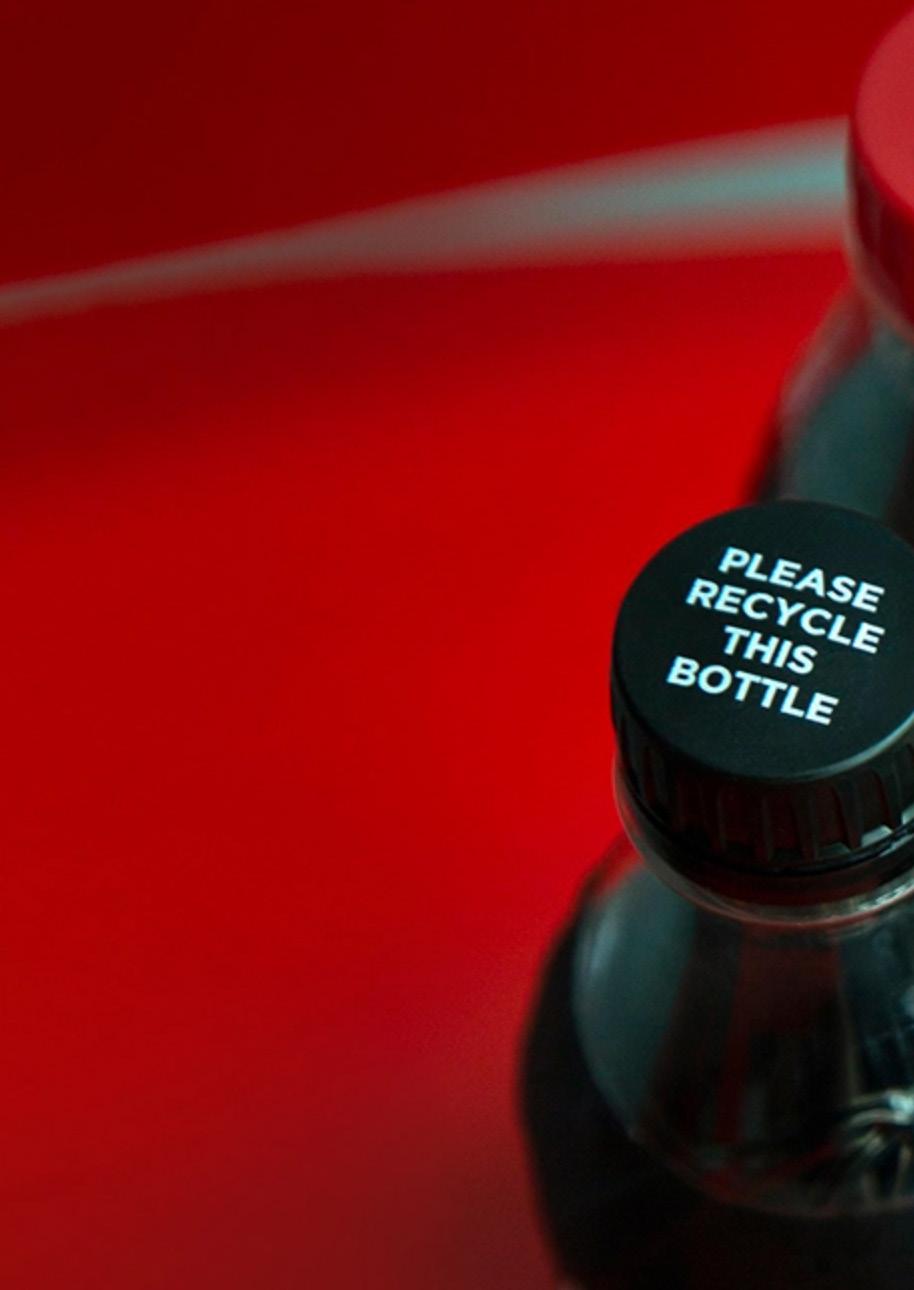 WRITTEN BY: HELAN ADAMS
PRODUCED BY: BEN WIGGER
WRITTEN BY: HELAN ADAMS
PRODUCED BY: BEN WIGGER
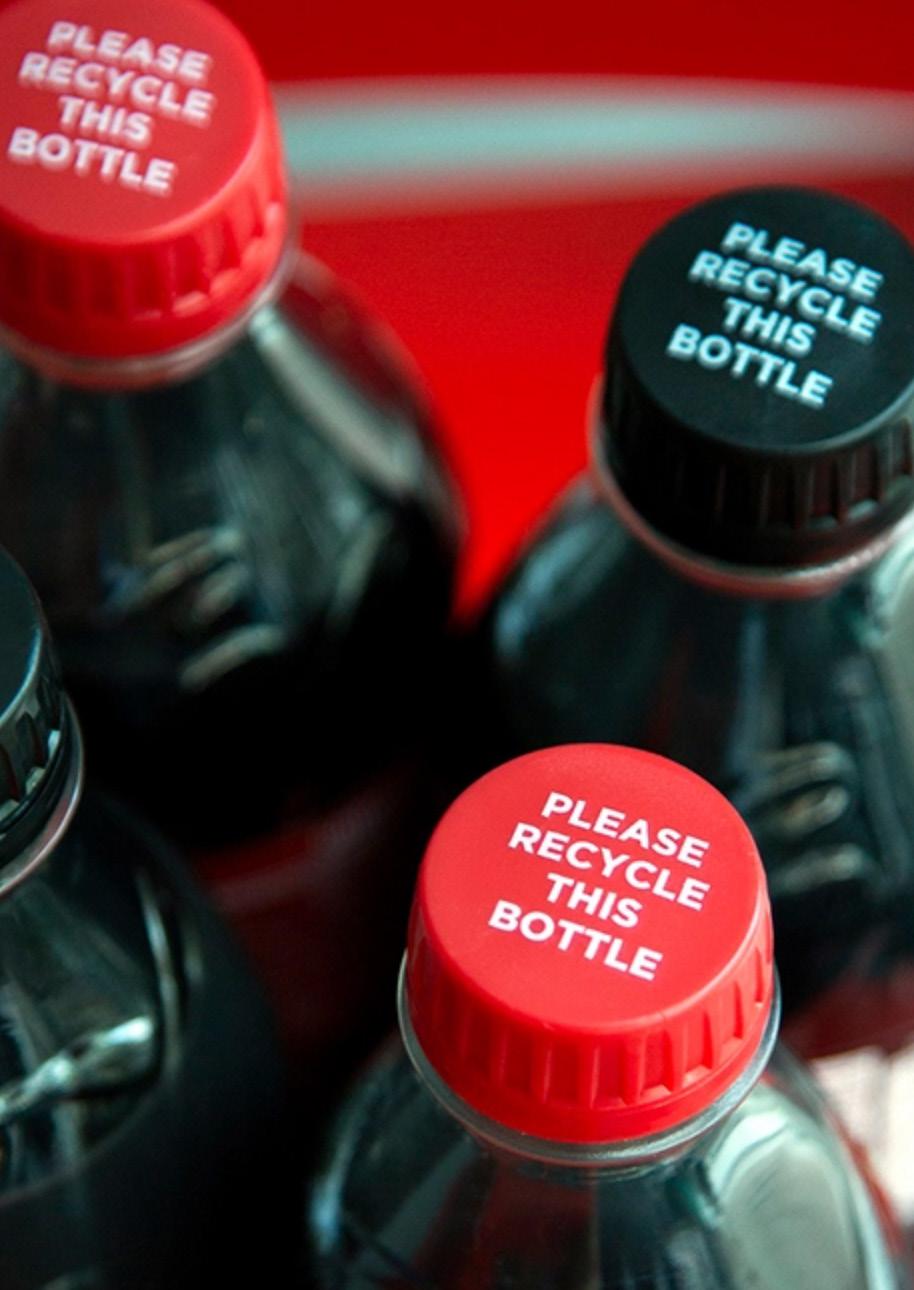
It’s hard to think of a more wellrecognised brand than Coca-Cola, with its bright red packaging contrasted against the white logo. Simple, yet effective.
First sold as an alternative to alcohol by former Confederate States’ Army veteran and pharmacist John Stith Pemberton, the inimitable soft drink was created in Atlanta, 1892. The drink – and its numerous flavour variations – can now be found across the world in cafes, bars, pubs, hotel mini bars and homes. In fact, Coca-Cola even became the first soft drink to be enjoyed in space aboard the Space Shuttle Challenger in 1985. That same year, the company invented the long-reigning six-pack to help consumers carry more drinks (a tactic quickly picked up by alcoholic beverage competitors).
Another example of the company’s transformative effect on pop culture and society can be witnessed in the run up to Christmas. Through one of the most enduring marketing campaigns of all time, starting in 1931, Coca-Cola built the modern iteration of Santa Claus – shifting him from the traditional green suit depicted prior to his now-trademark ‘Coca-Cola red’ suit, which was consequently cemented
Coca-Cola’s iconic bottles are internationally recognised, but Coca-Cola Europacific Partners aims to implement a more sustainable purpose for used bottles

“At Coca-Cola Europacific Partners, we believe that if we are going to grow, we have to grow together”LUCIA KARINA
SUSTAINABILITY DIRECTOR,
into the annals of history. Over the years, celebrities including Taylor Swift, Kate Moss and Aamir Khan have lent their starpower to promotional campaigns, while a photo of Selena Gomez drinking from a Coke bottle became 2016’s most popular celebrity post.
Although it has successfully spread all over the globe, Coca-Cola remains banned in two countries: Cuba and North Korea. For such countries, Coca-Cola represents the capitalism of the West and the US’ perceived cultural domination over the rest of the world – both of which certain leaders effusively reject.

For Coca-Cola Europacific Partners Indonesia and Papua New Guinea, Lucia Karina is the Public Affairs, Communication and Sustainability Director. In her role, Karina is passionate about implementing sustainable strategies, utilising green energy and working together with stakeholders to support local communities.
“We embed our sustainability initiatives into all of our activities,” explains Karina. “Not only for the supply chain section, but also on the commercial side. This forward strategy consists of water management, sustainable packaging, the climate, our society and the supply chain. We are also looking at how we can reduce the sugar content in our drinks.”
For Coca-Cola Europacific Partners, sustainable packaging is one of the key topics on the agenda.
“When we are talking about sustainability, our strategy in Indonesia is to reduce the plastic content in our packaging – that's number one,” explains Karina. “I can't say that it is simple, but it is focused!”
The company is also working to implement a reuse or recycle policy to minimise the volume of products going
TITLE: PUBLIC AFFAIRS, COMMUNICATIONS & SUSTAINABILITY DIRECTOR, COCA-COLA EUROPACIFIC PARTNERS INDONESIA AND PAPUA NEW GUINEA INDUSTRY: MANUFACTURING LOCATION: INDONESIA

Karina has 20 years of experience in the Building, Construction, and Chemical industries. She actively participates in industry and environment associations by taking the leadership roles for Indonesia Employer Association, Indonesia Beverages Association, Indonesian Green Building Council, Green Product Council Indonesia,

etc. She was appointed Public Affairs, Communications, and Sustainability Director in March 2016 and has resulted in a solid relationship with stakeholders and communities, strong compliance with licensing issues, enhanced employee engagement, and built a pathway toward a sustainable business through involvement in solar panel, recycling PET initiatives, and community capacity
to landfill. “We are removing unnecessary and hard-to-recycle packaging. We want to make sure that 100% of our packaging actually is recyclable.”
Coca-Cola Europacific Partners has increased the recycled content in its packaging to reduce the use of new material, including plastic made from fossil-fuels. Not only will this help increase the reusability and recyclability of its packaging, but it also aligns with the changing plastic packaging standards being put in place around the world. In Indonesia, the company joined with Dynapack Asia in a joint venture and built a PET recycling facility, Amandina Bumi Nusantara, with a capacity for 25,000 tonnes every year.
“We have also built the social foundation Mahija Parahita Nusantara in Indonesia. This is a non-profit foundation in which we are working to try and improve the lives and welfare of the waste pickers that work in these communities. We want to ensure that we increase the quality of the collection for the feedstock of the Amandina Bumi Nusantara recycling PET.”
Another facet of Coca-Cola Europacific Partners’s commitment to sustainability is the work it undertakes with the local government to ensure that all the stakeholders understand their responsibility, working together hand-in-hand in addressing the collection of waste and the infrastructure challenges in waste management.
“We educate, facilitate training, and conduct workshops to build this capability,” says Karina. “Our approach with the waste-picker community is not only to increase their welfare, but to also try to educate them.”
In an effort to do this, Coca-Cola plans to build a school for the children of waste pickers.
“It's a long journey, but my personal belief is, actually, we can do it as long as we can work together with all the stakeholders,” says Karina.
Over in Pakistan, Coca-Cola is enjoyed by many in the primarily alcohol-free population, with Coca-Cola Pakistan boasting a revenue of US$19mn. As well as market success, the company’s presence here means that it has had first-hand experience of the importance underlying sustainability initiatives.
Devastating floods this year have left one-third of the country under water and caused thousands to lose their lives, with these unprecedented monsoon rains being attributed to climate change and linked to sweltering temperatures across much of the western world. It’s an issue of increasing importance everywhere, so Coca-Cola is keen to mitigate its emissions and utilise green energy.
“Coca-Cola is serious about reducing its greenhouse gas emissions,” explains Karina. “Now, we have a sustainability council helping us work together not only with the supply chain, but also with sales and marketing, the finance team, and distribution. We understand that we need to mitigate our climate change impact and to protect the future of our planet.”
Internally, Coca-Cola Europacific Partners has committed to decarbonising its business and aims to reach net-zero emissions by 2040 – ten years ahead of the Paris climate agreement.
“In our day-to-day operations, we strive to reduce all carbon emissions,” says Karina.
The company is educating employees through small, sustainable disciplines, such as switching off unnecessary lighting. Coca-Cola is also working with its supply chain and sales teams on how to reduce carbon emissions from the beverage lifecycle – including the ingredients, the packaging, cooling and distribution.
“We understand that we need to mitigate our climate change impact and to protect the future of our planet”LUCIA KARINA PUBLIC AFFAIRS, COMMUNICATIONS & SUSTAINABILITY DIRECTOR, COCA-COLA EUROPACIFIC PARTNERS INDONESIA AND PAPUA NEW GUINEA



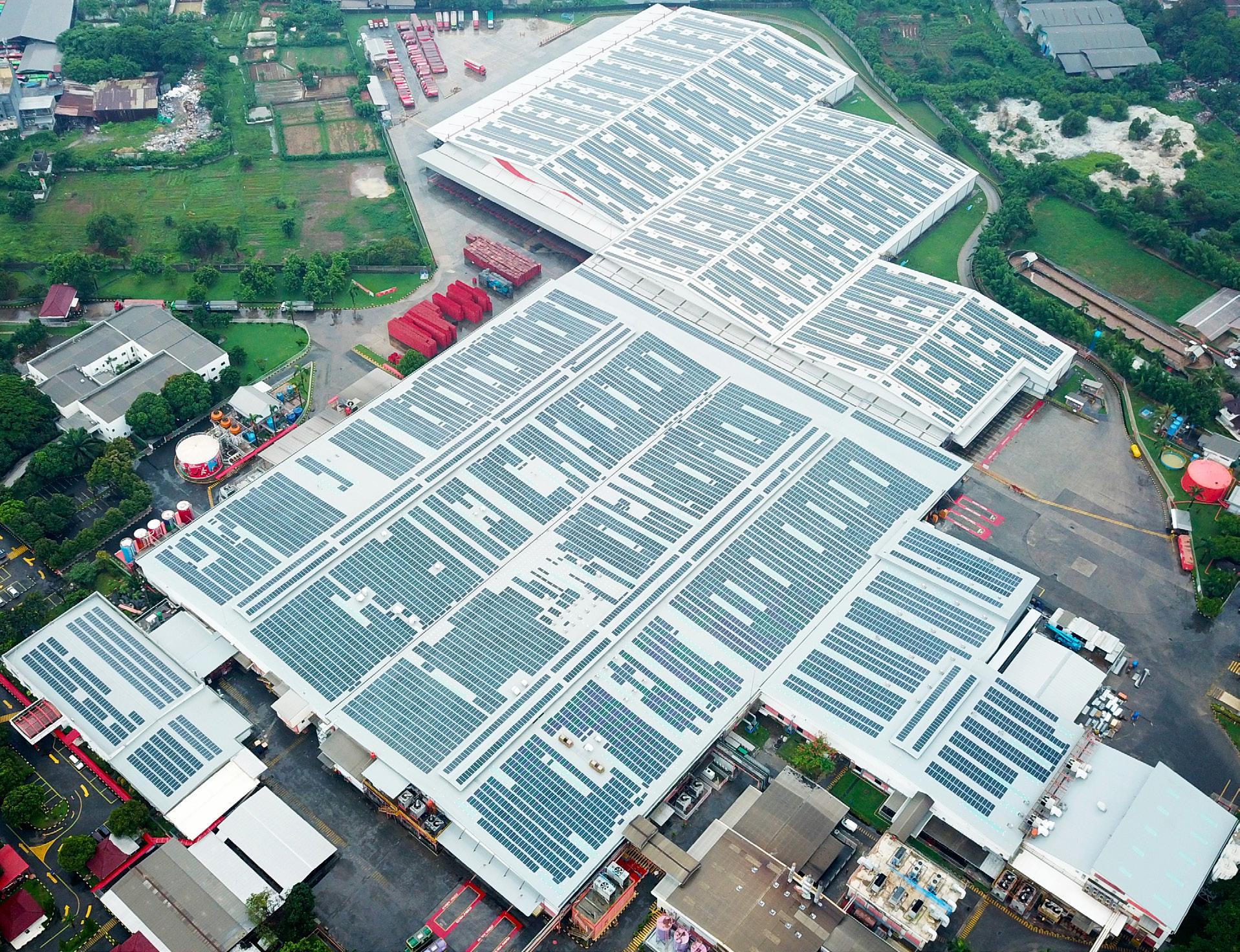
“This is also one of the key success factors for us at Coca-Cola Europacific Partners,” explains Karina. “The employees understand our sustainable ambitions; they feel that they have a responsibility in reducing carbon emissions.
“Finally, we are looking at how we can keep our customers happy and enjoying Coca-Cola, knowing that we are reducing our carbon emissions.”
In 2019, Coca-Cola Europacific Partners installed their largest solar panel project in Southeast Asia, which is producing clean energy and reducing emissions as a result.

“We are not going to stop here,” says Karina. “We will also continue to install solar power in other plants that we have across Indonesia and Papua New Guinea.”
With regards to the iconic Coca-Cola bottles, the company is reducing its use of crude oil and is pushing governments to provide the infrastructure for more efficient collection and recycling. Also, Coca-Cola has worked with its suppliers for the coolers to reduce the energy used, in order to keep drinks chilled.
Sustainable partnerships and supporting female staff Coca-Cola Europacific Partners joined up with LYS Energy to install these solar panels. The independent solar power producer builds and operates solar system across Asia and the Pacific for commercial and industrial sites.
Founded in 2013, the company is headquartered in Selangor, Malaysia.
“It was very important for us to partner with a company that also had a sustainable mindset,” says Karina. “The innovation that LYS Energy brought really helped us face climate change and what we could do about it.”
Through its partnership with Dynapack, the two companies have teamed up in a joint venture to build a PET recycling facility. Founded in 1959, Dynapack is a leading plastic total solutions provider in Asia, with 33 manufacturing plants.
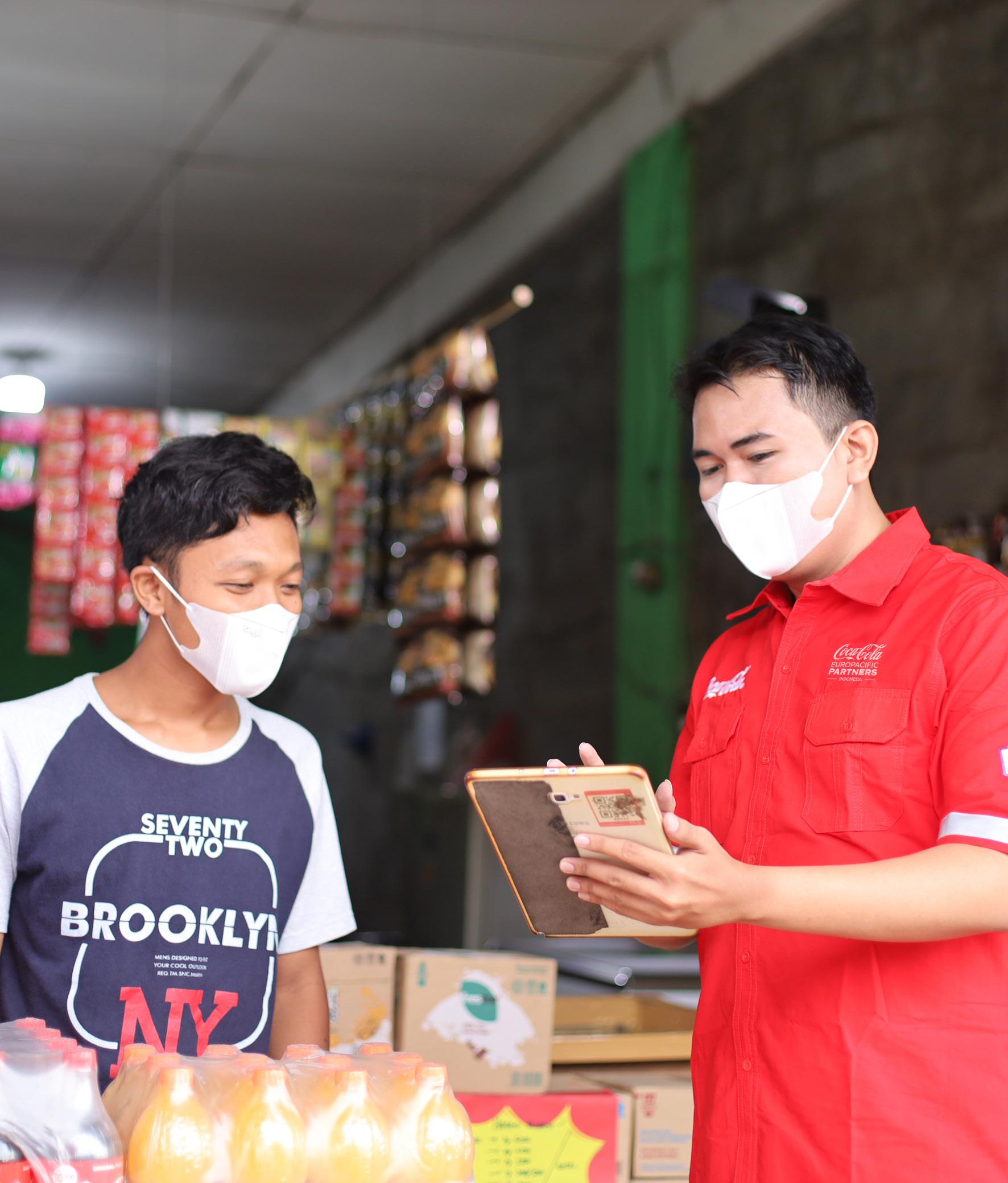


“Dynapack is also our partner in the social foundation non-profit organisation that we built to support the collection of used PET Coca-Cola bottles,” says Karina. “In addition to that, they are really helping us to provide a more efficient system for plastic packaging. They also have sustainability principles, which means we can work together and close the loop for plastic beverage packaging in Indonesia.”
In Karina’s experience, the key ingredient to a successful partnership is to have the same core principles. “I think that’s number one – to have the same principle. For us, it was on sustainability and human rights.
At Coca-Cola Europacific Partners, we believe that if we are going to grow, we have to grow together. To do that, we need a partner that has integrity and who can offer a new solution to help us achieve our future objectives. That is, for me, most important.”
For Karina and her team, the next 12 months at Coca-Cola will be spent focusing on their sustainability agenda.
“We are ready to commit to achieving the objectives that we have presented to our board and external parties,” Karina explains. “We aim to reduce our water use in manufacturing and we want to find a way to recycle the water in our plants; we have to make sure that this water fulfils international standards.”
As a system, the company hopes to achieve 100% water replenishment, planning to work together with The CocaCola Company and local communities to manage this and other initiatives, such as reforestation.
“We're planting trees and educating the local community to maintain the water so that when they use it, they make sure that it remains at a good quality,” explains Karina.
Coca-Cola is working with the local government to manage a reduction in water stress in Indonesia, but reducing its greenhouse gas emissions remains one of its strongest commitments.
“Beyond 2023, we are working closely with our vendors and our employees on how we can achieve renewable electricity by 2030. We also aim to make our primary packaging 100% recyclable by 2025 and achieve 100% plastic collection by 2030.”
Coca-Cola Europacific Partners Indonesia’s ambitions don’t just include the emissions and the environment, but place a focus on people, too – specifically on supporting female staff.
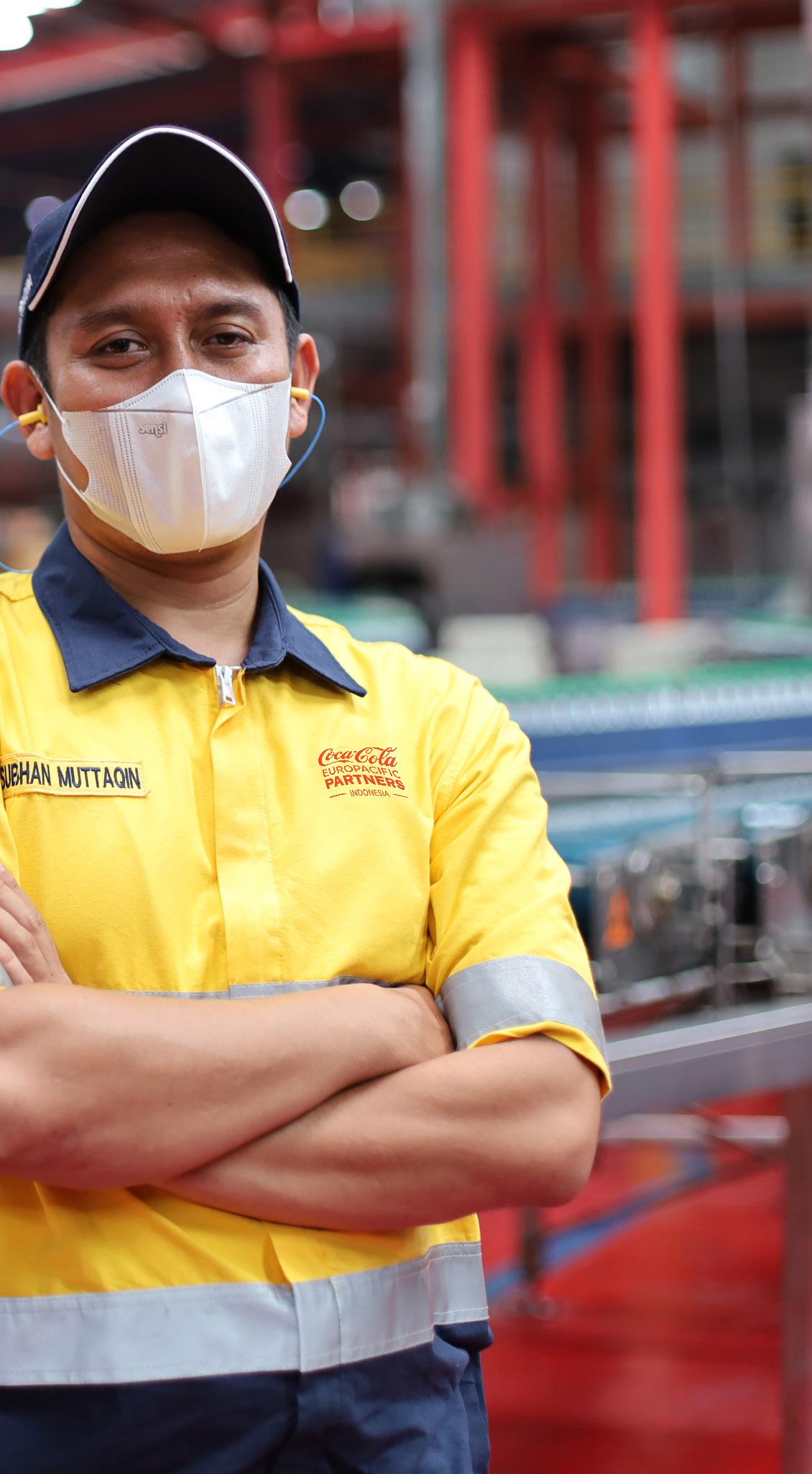

“We have workshops for women, such as coaching and mentoring programmes for our young female employees. For the local community, we also expand the contributions to help them build their capability and also capacity,” says Karina.
“We also have a social entrepreneurship programme to increase skills. We teach entrepreneurs the use of the PET bottle, how they are collected and how this waste becomes a good value for money. We help them understand how they can contribute to Indonesian nature. Our health education programmes advise attendees on how they can maintain a healthy lifestyle.”
Looking to the future, it’s clear that Coca-Cola Europacific Partners will be at the forefront of sustainability initiatives in the region – from the office to the supply chain and beyond.

“We want to make sure that 100% of our packaging actually is recyclable”LUCIA KARINA PUBLIC AFFAIRS, COMMUNICATIONS & SUSTAINABILITY DIRECTOR,
As the world continues its battle against climate change, we investigate the top 10 renewable energy companies leading the way to a sustainable future
In 2021, global employment numbers in the renewable energy industry reached 12.7m - that’s an increase of 700,000 new jobs in just 12 months. As climate change concerns escalate and businesses pay more attention to their ESG commitments, the sector is expected to continue to grow rapidly over the next 12 months.
Although the renewable energy industry has, like all others, faced the challenges of supply chain disruptions and uncontrollable rising prices, it has
remained resilient. Undoubtedly, this is thanks to new ‘clean’ technologies and new business models that prioritise inclusive and productive employment. With that in mind, we explore which of the world’s biggest renewable energy companies are on the trajectory to success in finding a sustainable energy transition.
WRITTEN BY: CHARLIE STEERSTEPHENSONBrookfield Renewable (BEP) is a limited partnership, based in Canada, which operates renewable power generating facilities across the globe. The company primarily focuses on the distribution of hydroelectric power, but it also owns wind, solar, and storage facilities in North America, South America, Europe and Asia.

Brookfield Renewable prioritises strong ESG practices to support global decarbonisation. With a target of 12-15% total returns and 5-9% annual distribution growth, it has also demonstrated the impending success of its repeatable growth strategies.
As the leading provider of green hydrogen, Plug Power Inc. is driving the revolution to reimagine the energy ecosystem. The company was founded 25 years ago with the hope of creating a safer, more sustainable future by decarbonising the economy
From product storage to energy generation, Plug Power provides world-class hydrogen solutions that help its clients achieve netzero goals. Customers such as Walmart and Amazon) have reported savings up to US$1mn per year thanks to Plug Power’s green hydrogen facilities.
Siemens Gamesa
Renewable Energy Market cap: US$12.24bn
Siemens Gamesa is a wind engineering company that provides onshore and offshore wind turbines, gearboxes, maintenance and reconditioning services to customers across the world.

In the past 40 years, Siemens Gamesa has installed thousands of turbines worldwide, generating over 122GW of wind power across the globe - that’s enough clean energy to power 110mn households per year. The energy company continues to demonstrate its commitment to making local communities more sustainable through infrastructure, employment and skills in the energy sector.
SolarEdge Technologies, Inc. Market cap: US$12.88bn
SolarEdge Technologies, Inc. is a global leader in smart energy technology. From electric vehicle (EV) charging and home energy management to grid services and virtual power plants, SolarEdge continues to pursue its mission to find a better way to harvest and manage energy in photovoltaic (PV) systems. With an emphasis on engineering skill and innovation, SolarEdge continues to provide award-winning products that power homes, businesses and transportation in 133 countries. The SolarEdge intelligent inverter solution, for example, maximises power while lowering costs.





Since 1999 First Solar has designed, manufactured and supplied PV solar power systems across the world. With its fourth American manufacturing facility expected in 2025, First Solar anticipates a global annual manufacturing capacity of over 20 GW, spanning the US, India, Malaysia, and Vietnam. First Solar is renowned for its thin-film semiconductor solar modules that convert sunlight into electricity. The solar company is also the engineer, constructor and operator of some of the world’s largest grid-connected PV power plants.
If you see a home with solar panels on it, there’s a high chance they’re crafted by Enphase Energy. Founded in 2006, the company set out to transform the solar industry with its revolutionary microinverter technology which turns sunlight into a safe, resilient and sustainable source of energy. Today, Enphase Energy has installed over 48mn microinverters on over 2.5mn homes in over 140 countries, helping millions of people access clean energy while striving for a carbon-free future.

Iberdrola SA Market cap:

Spain-based multinational electric utility company Iberdrola is a world leader in renewable energy. Over two decades ago the Iberdrola group set out to build a clean, smart and reliable business model which now operates in the US, UK, Spain, Mexico and Brazil. Today, the company specialises in the provision of clean energy, including onshore and offshore wind, pumped hydro, solar PV, and battery storage. It also leads the way in the generation and distribution of electricity on a global scale.
cap:
Vestas Wind Systems is a wind energy company based in Denmark. With over 40 years experience in the sector, Vestas was the first company to reach the 100GW landmarks for the installation and service of wind turbines. With +145GW of wind turbines installed in 85 countries across the world, the company has already prevented 1.5bn tonnes of CO2 being emitted into the atmosphere. Vestas continues to demonstrate the crucial role that wind power will play in our sustainable future.
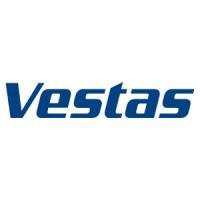


US-based NextEra Energy is the world’s largest utility company. Using a combination of wind, solar, nuclear, coal and natural gas facilities, the company generates and stores electric power for people and businesses across North America.
NextEra Energy generates more wind and solar energy than any other company in the world, and has spent years researching battery energy storage technologies and their uses. At the end of 2019, it had over 150MW of battery energy storage systems across several US states.
As well as planning to invest US$55bn in renewable energy infrastructure throughout 2022, NextEra Energy has created thousands of high-paying jobs across America as a result. Thanks to its reliability and efficiency, the company is set to remain the leading provider for sustainable energy generation and storage in the US.



Denmark-based multinational power company Orsted was once one of the most coal-intensive energy companies in Europe. Today, it leads the green energy revolution as the world’s most sustainable energy company. Orsted primarily focuses on supplying offshore wind farms in Europe, the US and Asia, and has already provided enough to power 15mn people. As well as its UK-based wind farms, Orsted also has projects in onshore wind, green hydrogen, and Renescience - an innovative bioenergy technology that uses enzymes to convert household waste into energy.
Proud to operate a sustainable business that respects communities, the environment, and its employees, Orsted is focused on showing the world how renewable energy can empower people and nature. Having already reduced its CO2 emissions by 86% since 2006, the company recently announced its goal of becoming carbon neutral in all operations and energy production by 2025 - a goal that will help its clients choose smart, sustainable energy solutions too.

 BY: SEAN ASHCROFT
BY: GLEN WHITE
BY: SEAN ASHCROFT
BY: GLEN WHITE

In virtually any business context, sourcing the best products and services for the best value to meet customer needs, while also being sustainable, is no small matter. When this is happening across approximately 500 hospitality properties across Europe, the Middle East, Eurasia and Africa (EMEA), it is a significant undertaking.
Welcome to the working world of Philip Halanen, Head of Sourcing and Sustainability EMEA at Wyndham Hotels & Resorts, which boasts approximately 9,000 properties worldwide across 23 brands.
He is responsible for the design and delivery of Wyndham’s regional sourcing strategy, which focuses on delivering a cost-effective yet sustainable and ethical supply chain for hotels across the EMEA region. This role ties in well with Halanen’s responsibility over the sustainability strategy of the EMEA division.
In today’s world of turmoil and uncertainty, strategic sourcing takes huge significance in a business’ functionality, often being the difference between feeling the full brunt of supply disruption or successfully navigating your way through it; with ESG requirements, it can be the difference between compliance and hugely damaging non-compliance.

As Head of Sourcing & Sustainability EMEA at Wyndham Hotels & Resorts, Philip Halanen says that succeeding in his complex role comes down to clear and consistent communication



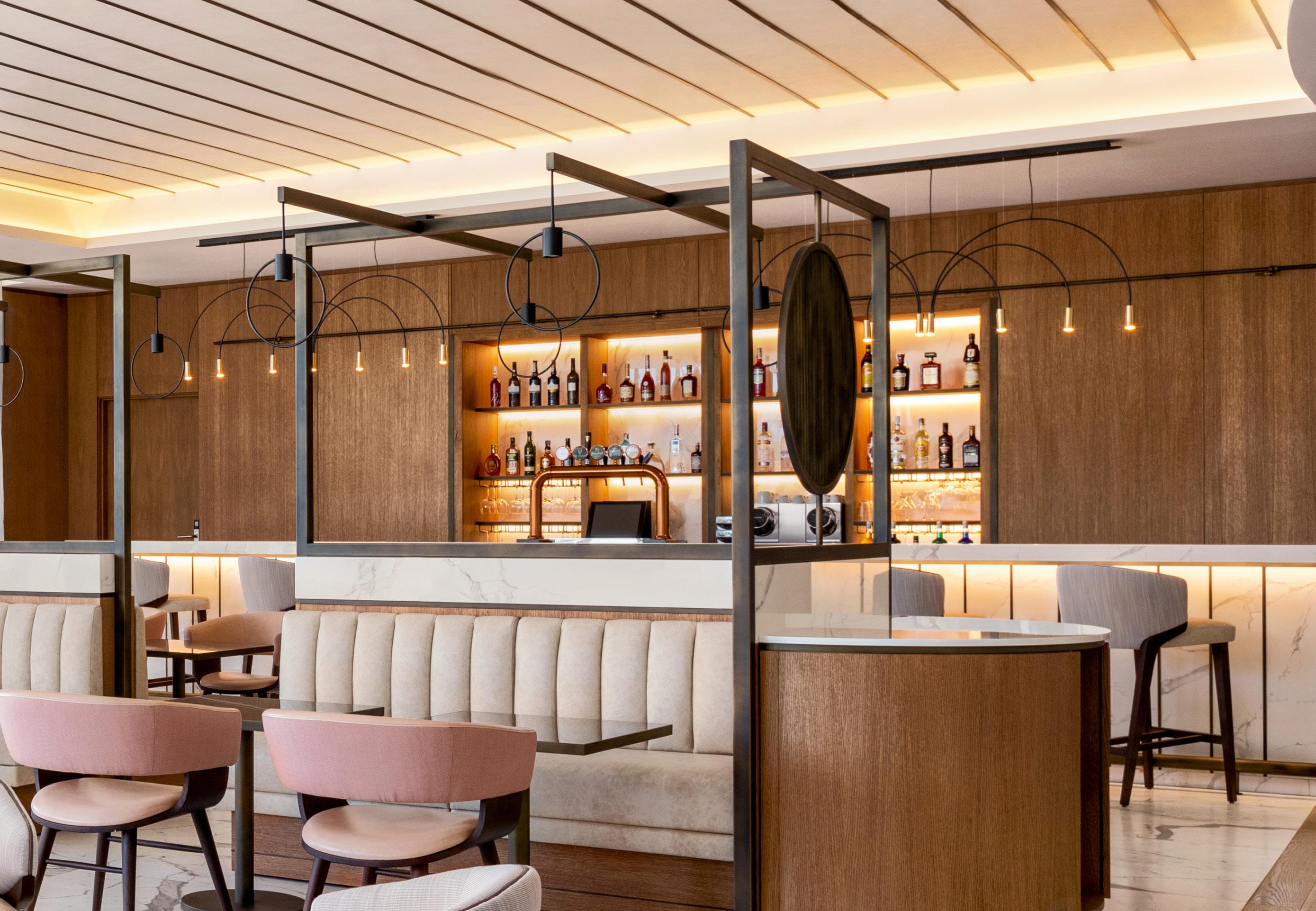
It is a job with multiple stakeholders and challenges, on both the sourcing and sustainability fronts.
“From a sourcing perspective, because we have various key markets across the region, you need to have suppliers who are local,” says Halanen. “This is to create efficient, sustainable supply chains with short lead times to market.”
This is why Halanen and his team constantly evaluate suppliers, to ensure they offer products and services “that are in line with our various brand standards”. He adds: “We operate different brands across the region, and each has a different set of standards, so it’s very important that localised suppliers are aligned to these, and that obviously their products and services are what the hotels need.”
For Halanen, there’s complexity, too, on the sustainability side. Again, he says that Wyndham constantly evaluates its suppliers to ensure they trade and operate ethically.
“We look at the labour they use in their manufacturing or creation processes, all the
way through to their emissions,” says Halanen. “Suppliers need the relevant documentation to show us they are trading in a way that is sustainable and ethical.”
Another challenge is winning over hoteliers for whom sustainability is not top of the agenda. “It's about creating the business case and justifications for people who are less convinced on the environmental impact of their operations,” Halanen explains. “You have to communicate that sustainability is critical not only from an environmental point of view, but also from a commercial perspective.”
Wyndham Hotels and Resorts has approximately 9K properties globally across 23 brands with around 819K rooms.
Interestingly, the pandemic helped here. Although COVID-19 was of course very damaging for the hospitality industry, Halanen feels the pandemic was “a catalyst for change – people want to rebound as better businesses”, and that it focused people's minds on sustainability – particularly in light of some ways the world benefitted from society’s shutdowns.
“Whether you’re a hotelier, a transport provider, or in the extended supply chain, now more than ever we’re aware of the importance of sustainability,” he says.
But to keep Wyndham’s ESG performance in EMEA on track, it’s Halanen’s job to ensure that the company’s sustainability programme is made accessible “by removing barriers to entry through making it easy to understand and giving hotel staff the tools and training they need to ensure they're equipped to succeed in this area”.

“When providing a network of suppliers for a hotel, you need to understand that each service or product required will have different stakeholders with different needs”
PHILIP HALANEN TITLE: HEAD OF SOURCING AND SUSTAINABILITY EMEA INDUSTRY: HOSPITALITY LOCATION: LONDON, UK

Having started his career in a variety of commercial and operational roles in the aviation and professional services industries, Philip is currently the Head of Sourcing & Sustainability for Wyndham Hotels & Resorts EMEA. In this role, Philip is responsible for the design and delivery of the Wyndham Hotels & Resorts’ divisional sustainability strategy, including oversight of the implementation and growth of the Wyndham Green Programme. Philip is also responsible for the company’s divisional sourcing team, ensuring that it delivers a cost effective, sustainable and ethical supplier network across the EMEA portfolio.


“I talk about sustainability every day, but I need to be aware that for others, it might not be an everyday conversation”
PHILIP HALANEN HEAD OF SOURCING AND SUSTAINABILITY EMEA, WYNDHAM HOTELS & RESORTS
The programme to which Halanen is referring is ‘Wyndham Green’, part of the group’s global social responsibility strategy. It comprises five key pillars: Climate Change, Energy Efficiency & Renewable Energy, Water Conservation, Waste Diversion and Biodiversity.
The Wyndham Green programme has been rolled out across the globe. It has the capacity to take a hotel from doing little on sustainability, through to making all aspects of its operations and extended supply chain sustainable, including in the way it procures goods and services.

Halanen reminds us there is a commercial point to sustainability, not just an environmental one: “It should be an important selling point for hotels, as consumers are really interested in staying in sustainable accommodation. For example, making small investments in energy efficient light bulbs can not only improve your bottom line by reducing power consumption, but it can also go some way to improving the sustainability characteristics of your hotel.”
A key focal point of Wyndham Green is “making sure our hotels reduce the energy they consume, whether it be electricity, gas or oil that a hotel is using”.
Halanen adds: “It's critical to track consumption utilities on a monthly basis, baselining it, and understanding how operational changes can be made to help properties reduce emissions.”
Measuring a hotel’s impact is pivotal to Wyndham Green: “If you don't know what your impact is now, you can’t credibly set a target for carbon reduction.
“The simplest way for a hotel to baseline their energy consumption is to do it on a month-by-month basis. This will show how much energy they’re using to operate the hotel, and will then baseline this over six months and see what it's telling them.”
Halanen points out that this is why Wyndham is encouraging its properties to start that measuring process as soon as possible – because “the more data they have, the better able they are to baseline what they’re using and then set strategies in place to reduce consumption”.
Once a hotel has a picture of its energy consumption, the next step is to reduce energy use, such as by making sure energy efficient light bulbs are used throughout a property, where possible.
“For such a relatively small change, this will have a big impact on the amount of energy a hotel will consume,” Halanen says. “And then there’s the use of renewable energy. Hotels can install solar power, or buy electricity from green sources.”
Water conservation is also another crucial sustainability area in many areas across the EMEA region, where water stress is not uncommon. Halanen says water use in bathrooms, public areas, laundries and kitchens must be monitored and regulated. Waste recycling is a further plank of
Wyndham Green, as Halanen and his team help hotels recycle, reducing what is sent to landfill.
“It’s about ensuring we continue eliminating items such as single-use plastics, and that we make sure that – when scarce items are used – they are recycled at property level,” he says.
Recycling programme a challenge in some EMEA regions One challenge when engaging hotels to participate in recycling programmes is the lack of recycling facilities available in certain countries. “Governments really should enable basic recycling for any hospitality business,” comments Halanen. “But if, like us, you’re a hotel company with five or six properties within a given city, you can bring people together and create the demand locally for recycling, speaking to the local government authorities or waste businesses to try to create such a service in that area. This way, it’s possible to unlock the benefits of having good sustainability schemes in place.”
“A simple way for a hotel to baseline energy consumption is to measure utility usage on a monthly basis”
PHILIP HALANEN
Video: Wyndham Hotels & Resorts in global sustainability drive
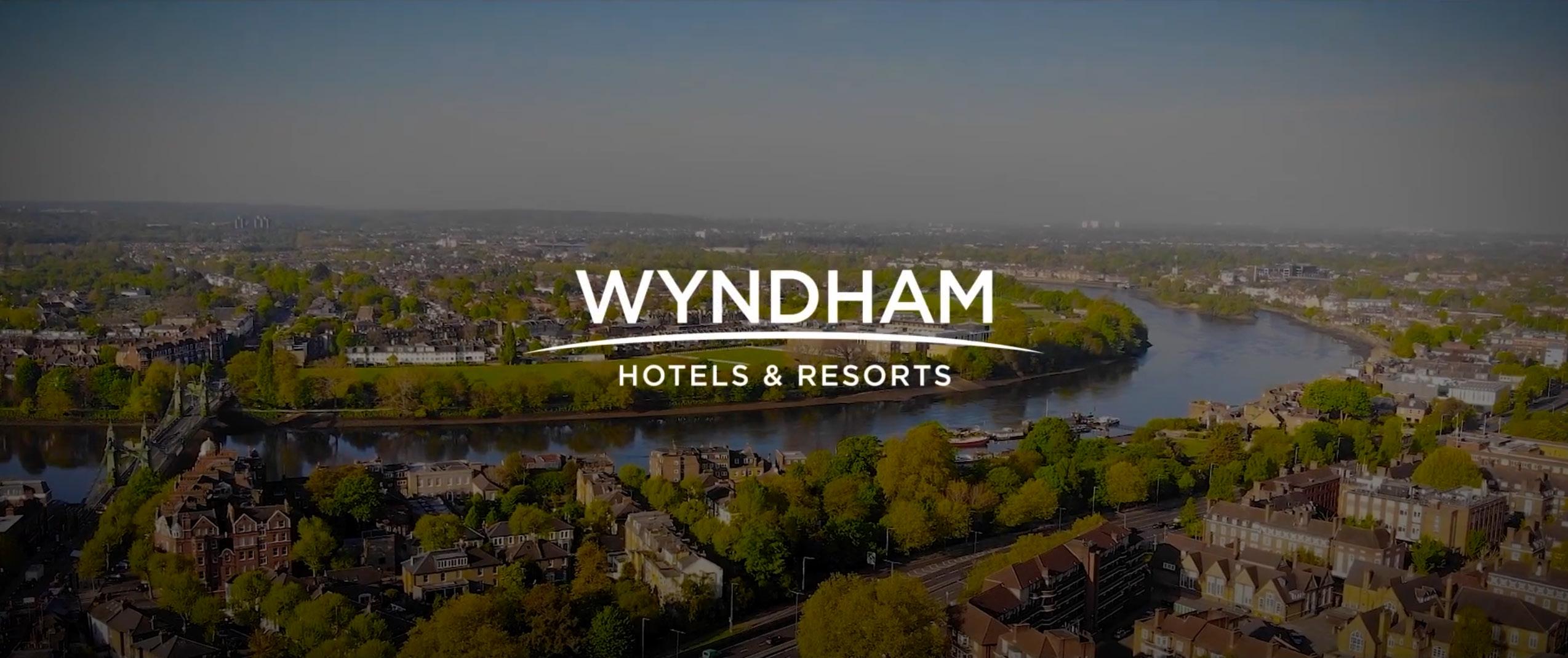
Then – on top of all these sustainability considerations – it’s important for hotels to consider the management of energy demands during seasonal peaks, such as summer and public holidays.
“Being in hospitality, you have to be aware of the impact of seasonality on your energy demand and ensure your operation is robust enough to minimise your use of utilities during these peaks.”
Ways to achieve this include strong in-house communications on the importance of sustainability initiatives, such as turning lights off or the installation of motion sensors to automate room power usage.
“When you’ve done one or more of these things, you will be able to look at the improvement on your consumption using the monthly consumption data,” Halanen stresses.

But, of course, Wyndham Green is not just about meeting internal ESG targets – it’s also about empowering guests to make sustainable choices.

“It’s important that hotels set an example,” says Halanen. “One of the things we’re looking at is the availability of EV charging points at our properties.
Many of our properties are in drive-to locations and the availability of EV charging is something we think is important to offer.
“Suppliers need the relevant documentation to show us they’re trading in a sustainable and ethical way”
It's about ensuring that we consider the choices travellers make when coming to one of our properties and that the necessary infrastructure or standard is in place to make a sustainable journey possible.

Wyndham’s stakeholders are many and varied, with customers being just one group. Another critical group of stakeholders are hotel franchisees, who are the owners, the operators and also the staff working at those hotels.
In terms of sourcing suppliers, Halanen explains that, when providing suppliers
for a property or a hotel, it's important to understand that each supplier – and the service or product they offer – will have a different stakeholder in the hotel operation.

“So, if we're talking about cleaning or linen categories, you have to consider the needs of the housekeeping team when selecting products,” he explains. “Similarly, if you’re sourcing software, you have to consider the IT managers and with food, it’s obviously the chefs you need to consider.”
He goes on “franchisees are always considering price, total cost of ownership and the cost of change when making purchasing decisions – as you would expect”.
“On the sustainability side, my stakeholders are very much our franchise partners, hotel staff, customers and internally my colleagues – as they are critical to championing the many benefits of the Wyndham Green programme.”
Halanen’s challenges are almost as complex as Wyndham’s stakeholders, and he concludes by pointing out that, to achieve success across sourcing and sustainability, “you need to ensure that people know why we're doing what we’re doing, and so communication is key”.
He finishes by summing up how the responsibilities of his role are woven throughout every aspect of his working day: “For me, it's my bread and butter; I talk about it every day. But for others, sustainability won’t be an everyday conversation. With the Wyndham Green Programme or our Preferred Supplier programme, it's really important that people not only understand what you need from them, but also what you're trying to achieve and the benefits that will bring them.”

